It was nearly 100°F. I sat on a metal chair with water soaking my shirt, a last-ditch effort against the stifling heat. Even in the shade, the temperature was nearly unbearable. Inside the open-air pavilion, Jessica and I sat enraptured, listening to the stories being told by Pablo Rey and Anna Callau, two travelers who’d been driving around the world for 15 years out of a tiny 4×4 Mitsubishi Delica. Their saga of sucking sand into their engine in the deserts of Sudan, relying on the kind assistance of locals to help them make it to civilization where Pablo could source an engine and eventually get the Delica roadworthy again, and their tale about a deserted beach on the coast of the Red Sea where there was almost no shade from the blistering sun triggered in me a deep longing for the challenges that come with eschewing the banalities and conveniences of civilized life.
It was 2015, and Jessica and I had been living the #vanlife for two years at that point, traveling around the US in our 2wd VW Vanagon named Falkor. We loved that van so much and had experienced some of our highest highs and lowest lows in it as we traveled from coast to coast in search of sunsets, coastlines, valleys, peaks, and the undistracted clarity that miles upon miles of empty roads can effect.
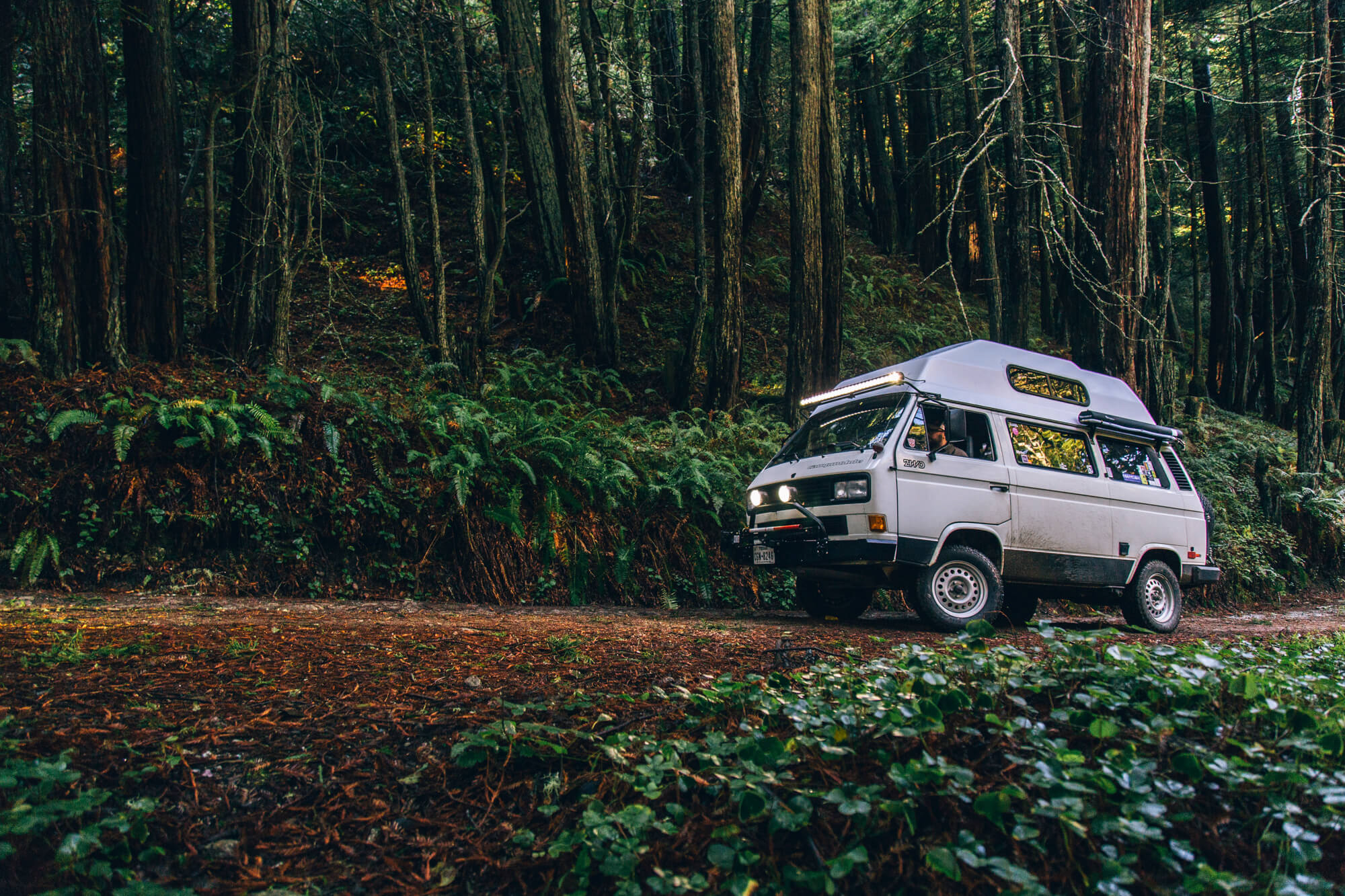

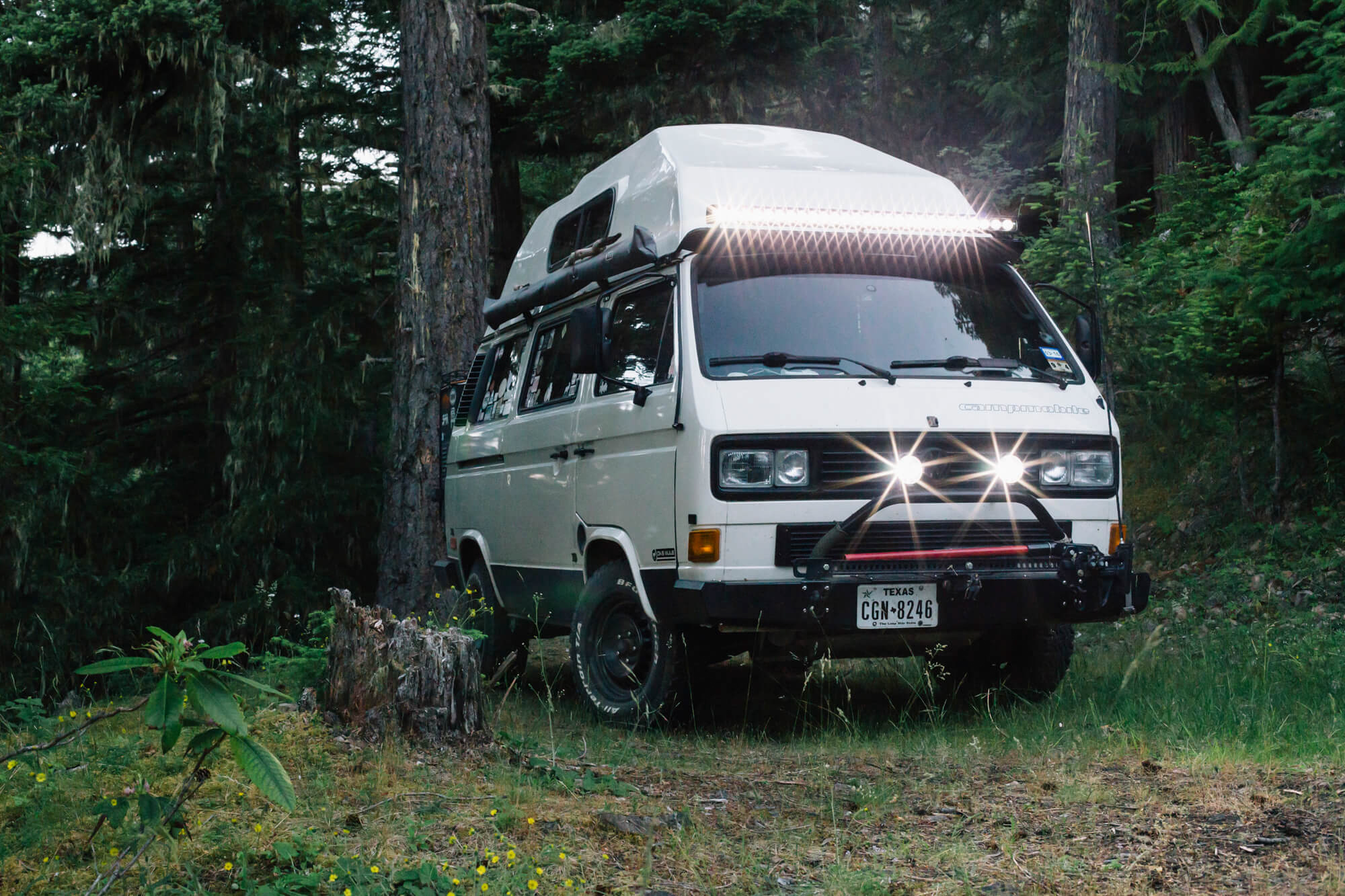

But this forum I was sitting in was different from all that. At the Northwest Overland Rally (NWOR) in Plain, Washington, were two people who had been living in a tiny van, traveling the world, earning money from writing and odd jobs here and there, scraping by just to do everything they could to keep the wheels turning and the little Delica pointed at different borders, different people, different languages, and foods, and the varying ways of life that exist under flags not red, white, and blue. Their story wasn’t one of the saturated online world where millennials in toaster-shaped vans proclaim Vanlife this and Vanlife that, a fad I too eagerly jumped into. No, no, this felt different. I’d never heard of these folks, Viajeros 4x4x4. Even while our follower count on social media grew every day, a measuring stick against which we compared ourselves with others, this other thing I was hearing about felt different in some important way.
Overlanding. What the hell was this word I kept hearing from Anna and Pablo, Brad and Sheena, Graeme and Louisa? Talk after talk from the aforementioned couples further exposed me to the existence of a whole other world: one of mud bogs and breakdowns in places like Pakistan and Thailand, one of meals shared with the Maasai in Tanzania and Kenya, stories about overcoming difficulty and relying on the generosity of people in Colombia and Argentina. Photos flickered on a white backdrop depicting far-flung places—a little green Mitsubishi Delica or a white VW Vanagon or a loaded up Defender 130 in the foreground, towering peaks or blistering deserts or ancient temples in the background. I was madly in love and tears filled my eyes.
“We have to do this.” I whispered to Jessica. “We have to overland.”
We spent a great deal of time that weekend chatting with some of those travelers and others about whether our 2WD Vanagon was the right platform for what we wanted to now pursue. Answers were mixed but it seemed the consensus was sure, we could engage in overland travel in our 2WD, but if we really wanted to get off the beaten path and find the hidden gems in jungles and coastlines, getting a 4WD rig would be better suited to that end.
The table was set.
When we had first hit the road in December of 2013, our dream rig was a Volkswagen Vanagon Syncro. The Syncro is a cult icon, a 4WD bus with a small footprint and great capability. At the time we didn’t have the money to buy one of these vans as the market was exploding and the price of a decently sorted Syncro ran in excess of $35,000 for a 25-year-old vehicle.
But now, after our experience at NWOR, we wanted to travel the world, and we really wanted to stay in a VW if at all possible. We loved their size, the functionality, the romance, and parts of the community. So, three months after NWOR, we found a listing for a Syncro in Durango, Coloraado that was within our price range, had a pop-top, an engine conversion, and rebuilt gearbox with only 30,000 miles on it for a price under $20,000. I showed Jessica the listing because she’s the Decider; she read through it, looked up at me, pressed her Cupid’s lips together arcing downward, and nodded
“I think this is the one.”
The next morning we were off to Durango and the day after that we were driving back a champagne-colored Westy pop-top Syncro through the western slope of Colorado and back to Fort Collins where we would soon begin building out the rig. We should’ve known it would be a lot harder than we anticipated when the rear passenger CV joint broke only 200 miles into our drive back to Fort Collins. Four hundred miles later the engine blew.
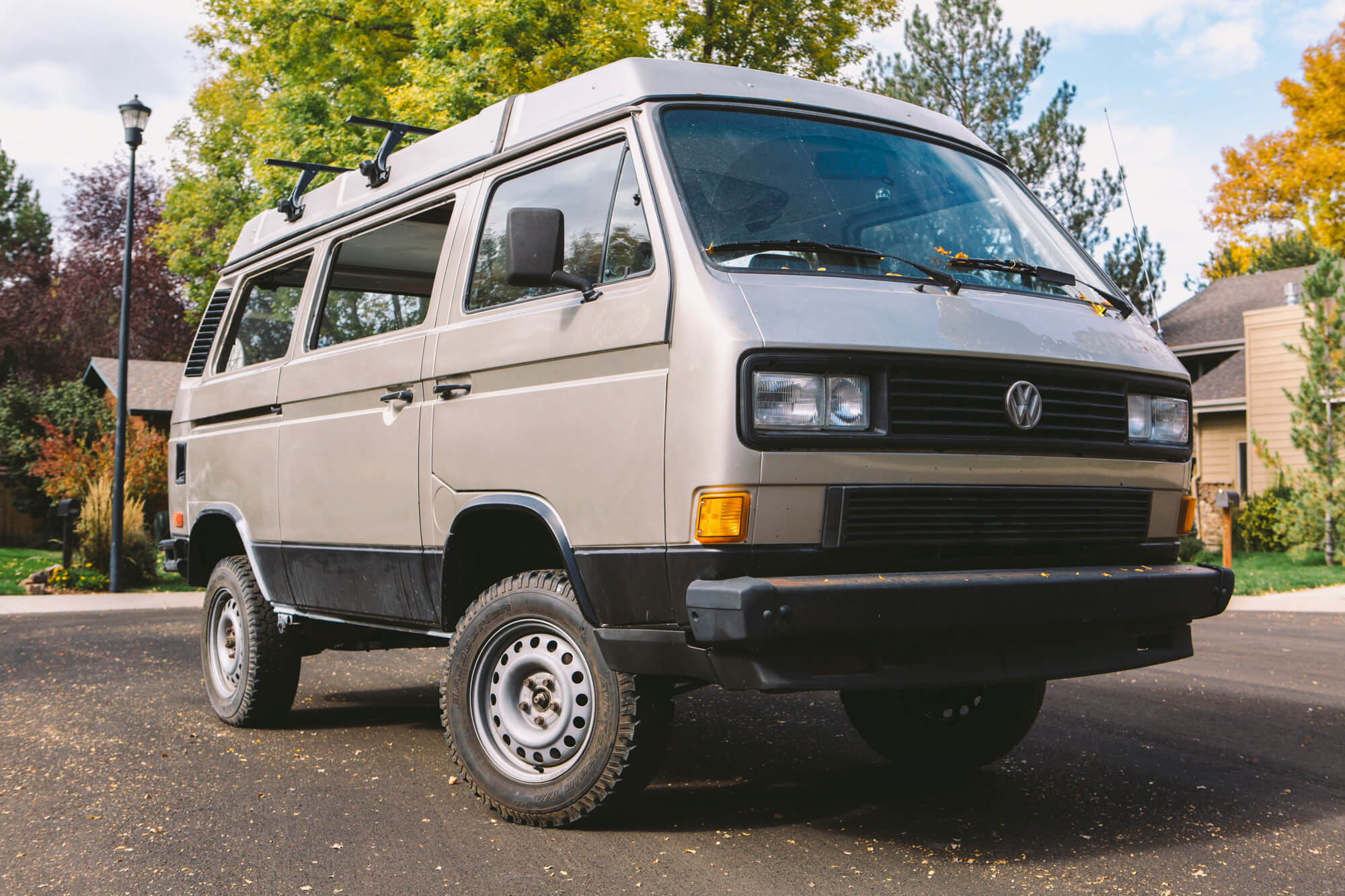
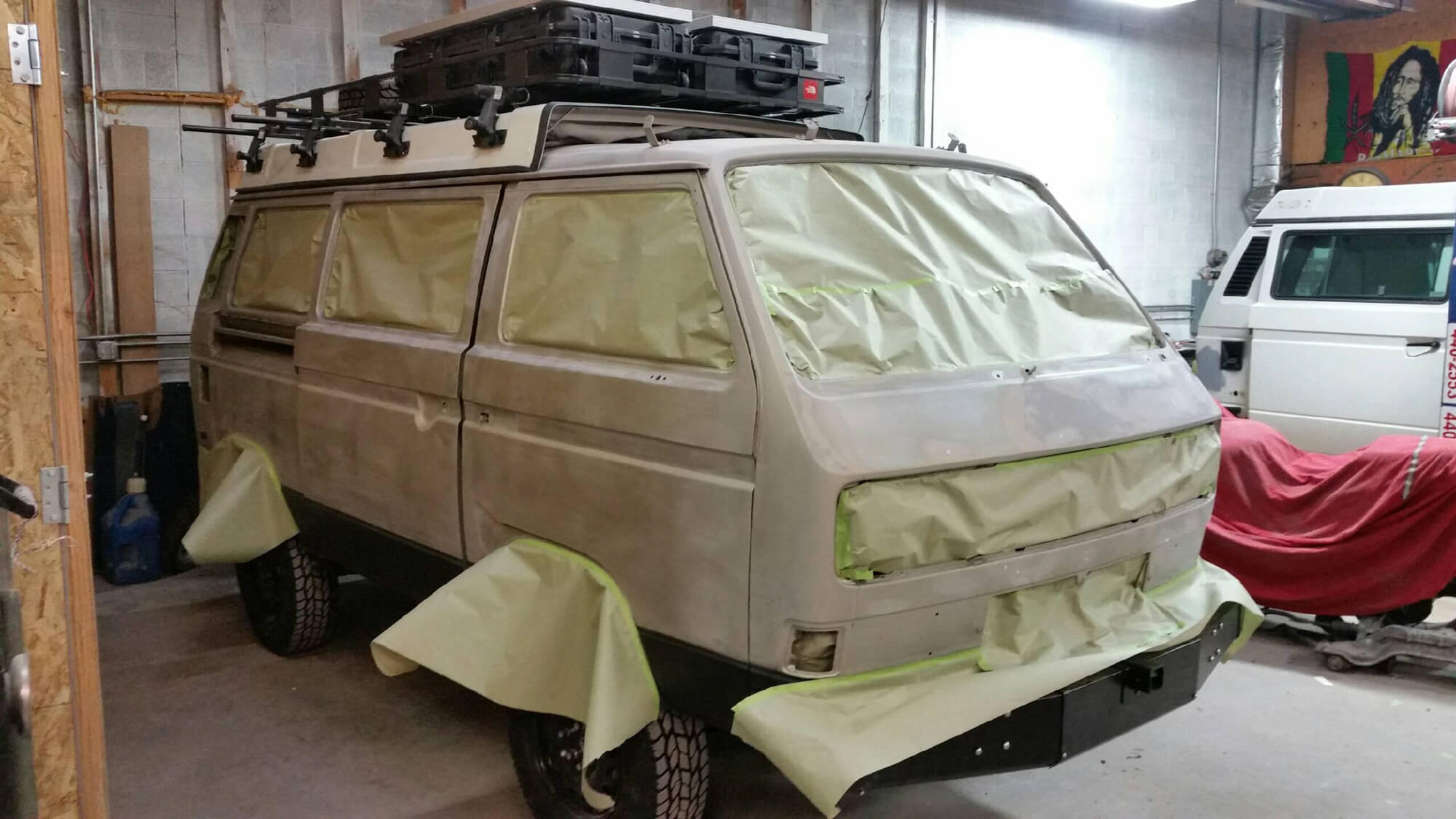
What was supposed to be an easy, straightforward build turned into a nightmare that took place in two states and two shops: one competent but increasingly busy; the other incompetent and horribly mismanaged.
Our goal had gone from getting a well-sorted Syncro that needed a few mods to holy-crap-we’re-doing-a-full-restoration, engine conversion, gearbox rebuild, suspension, paint job, and so on. We made the mistake of thoroughly documenting our build on social media, opening ourselves up to all the attendant second-guessing and criticism that entails, in addition to adding yet another content obligation to an online platform that yields next to no compensation for the time spent entertaining other people.
I don’t want to go into the build experience too much here. To those predisposed to view difficult times with a cheery disposition, the experience was one where we learned damn near everything there was to learn about our Syncro and felt confident doing most any work it needed to keep it on the road. Keep in mind that before this build I could barely change the oil on my own. To those predisposed to view difficult times from a more melancholy perspective, the build sucked. It was a huge waste of money, brought many tears and fights, strained friendships, and opened our eyes to how awful some business owners can be to the people that work for them and to the customers that give them $15,000 to $25,000 to complete work. But I digress. It was an expensive learning experience and one that more often than not we regret deeply and yet, in many ways, are thankful for.
When we finished our build, we drove our Syncro just over 500 miles before the gearbox erupted, necessitating the second of three eventual rebuilds on this van in two years and 45,000 miles.
After getting the gearbox in and heading down the road, the Syncro drove like utter garbage. We’d paid a shop in Seattle to convert the engine to a turbo-diesel, as per their recommendation and those of a few other Vanagon whisperers we’d put our trust in. We paid that shop whole-ass money for a half-ass engine conversion that had problems nearly the entire time we owned the van. We went through eight fuel pumps, five turbo control valves, two starters, six different tunes, various intercooler fixes, had problems with our drive-by-wire throttle, and the list goes on. And that’s only what we faced with the engine. We upgraded the CV joints to a beefier set and those went bad inside of 5,000 miles. We had a coil-over spring break, the shocks went bad, the shift linkage was a perpetual issue, and did I mention we rebuilt our gearbox to the tune of no less than $3,000 three separate times?

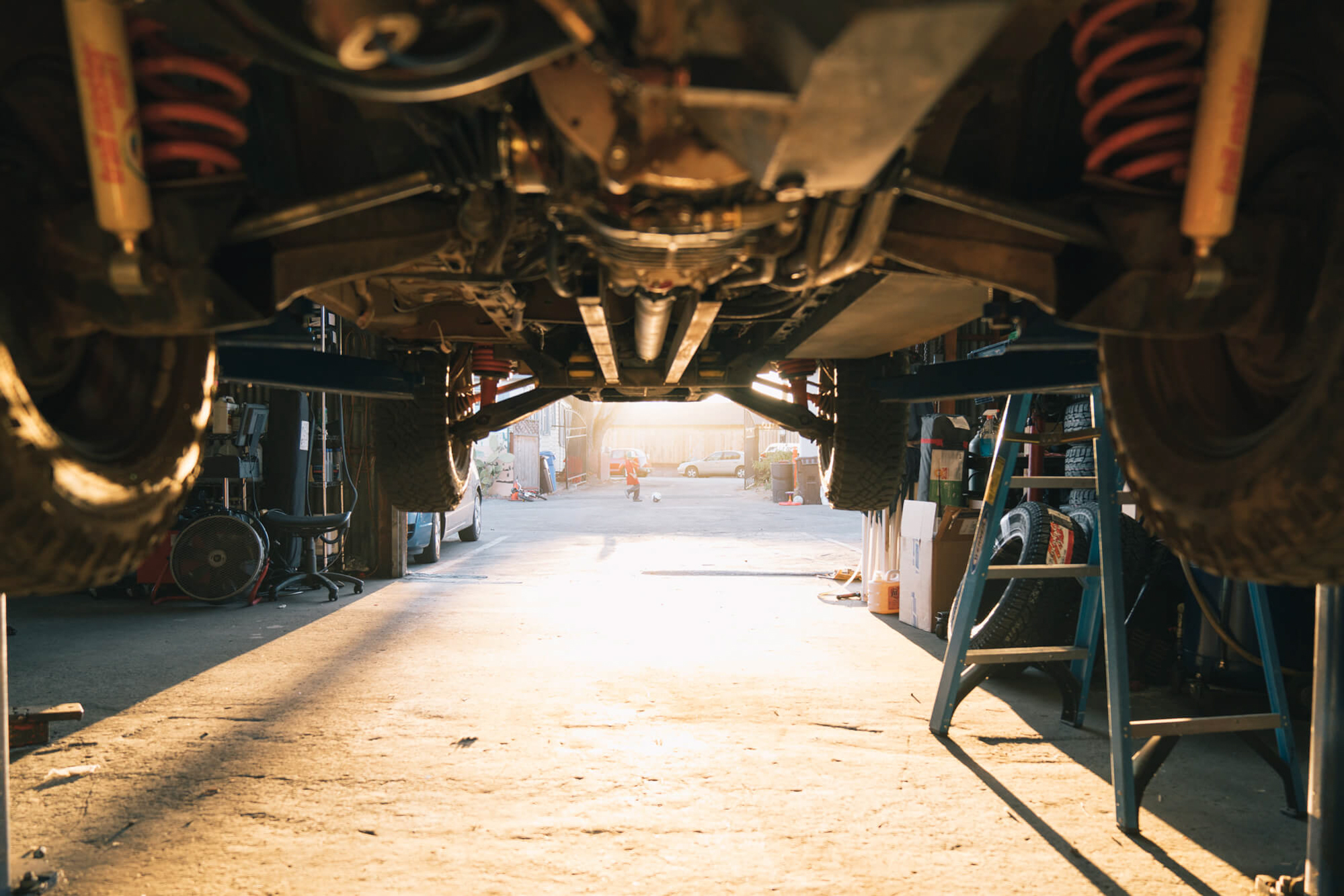
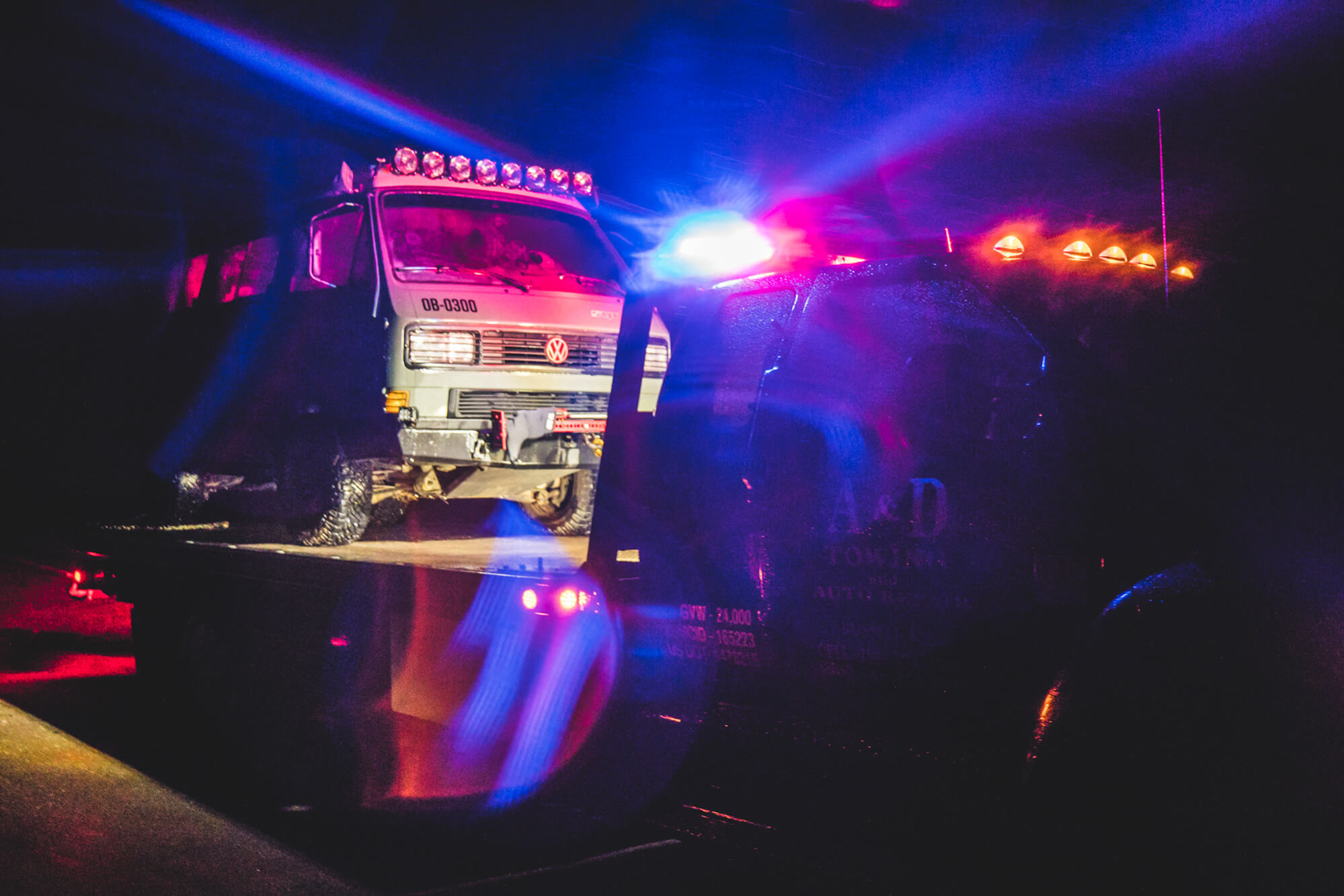
Every day we got up out of bed in our Westy and looked at each other, our eyes saying, “Here we go again. Let’s keep it together.” It’s not an exaggeration to say that for the first and only year we traveled in this Syncro, we went hardly an entire week without needing to fix something. Finally, from August to October of 2017 we managed to drive some 7,000 miles with zero problems. She started great, idled evenly proving the fueling issues we’d been having were sorted, her turbo spooled up, whined delightfully, and boosted like she should have from day one. In a 6,500-pound toaster of a van, we were regularly getting 27 mpg. Other than the fact that I knew the gearbox main-shaft and ring and pinion were on their way out, I knew that Syncro was as good as it would ever get.

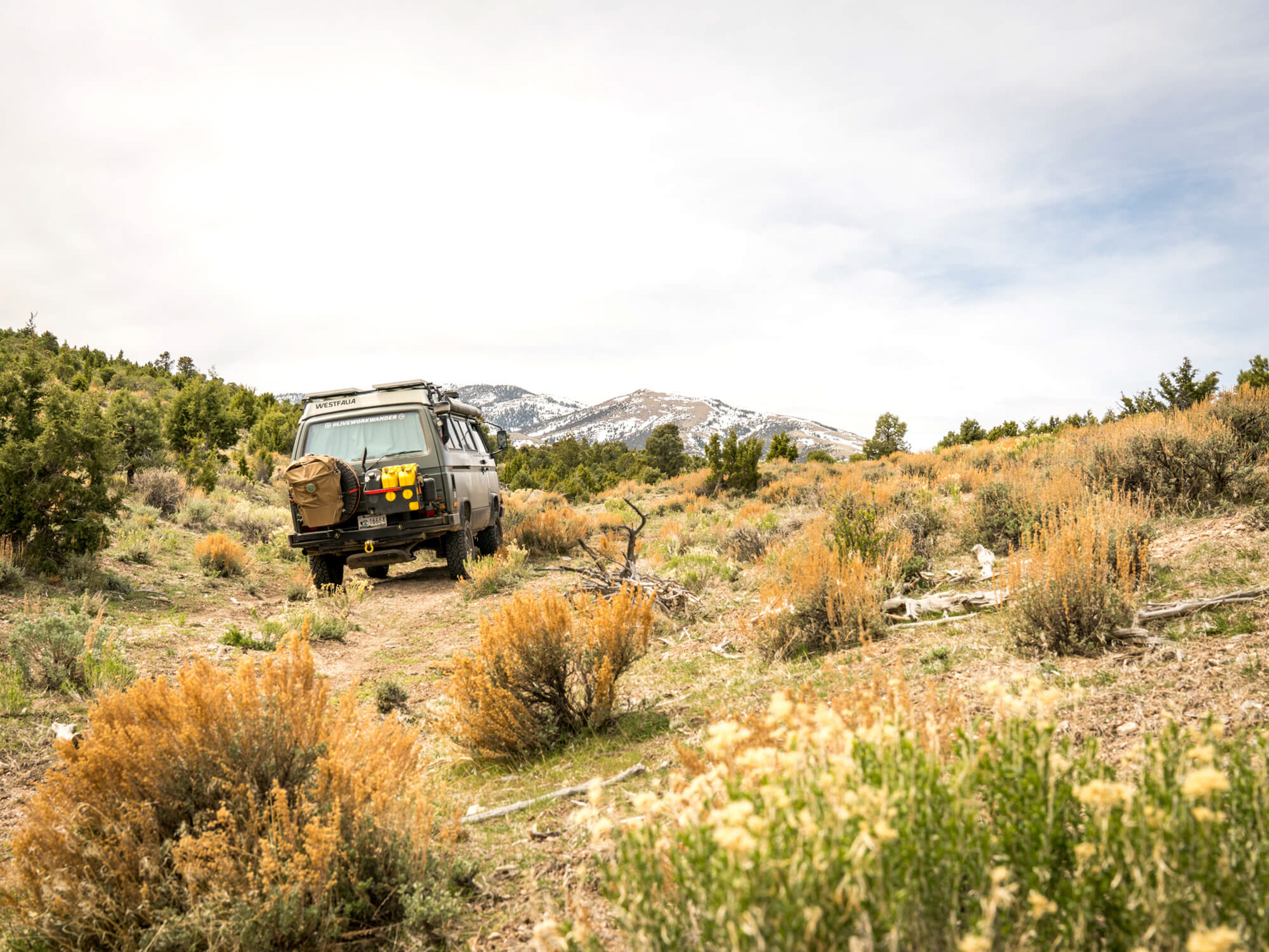
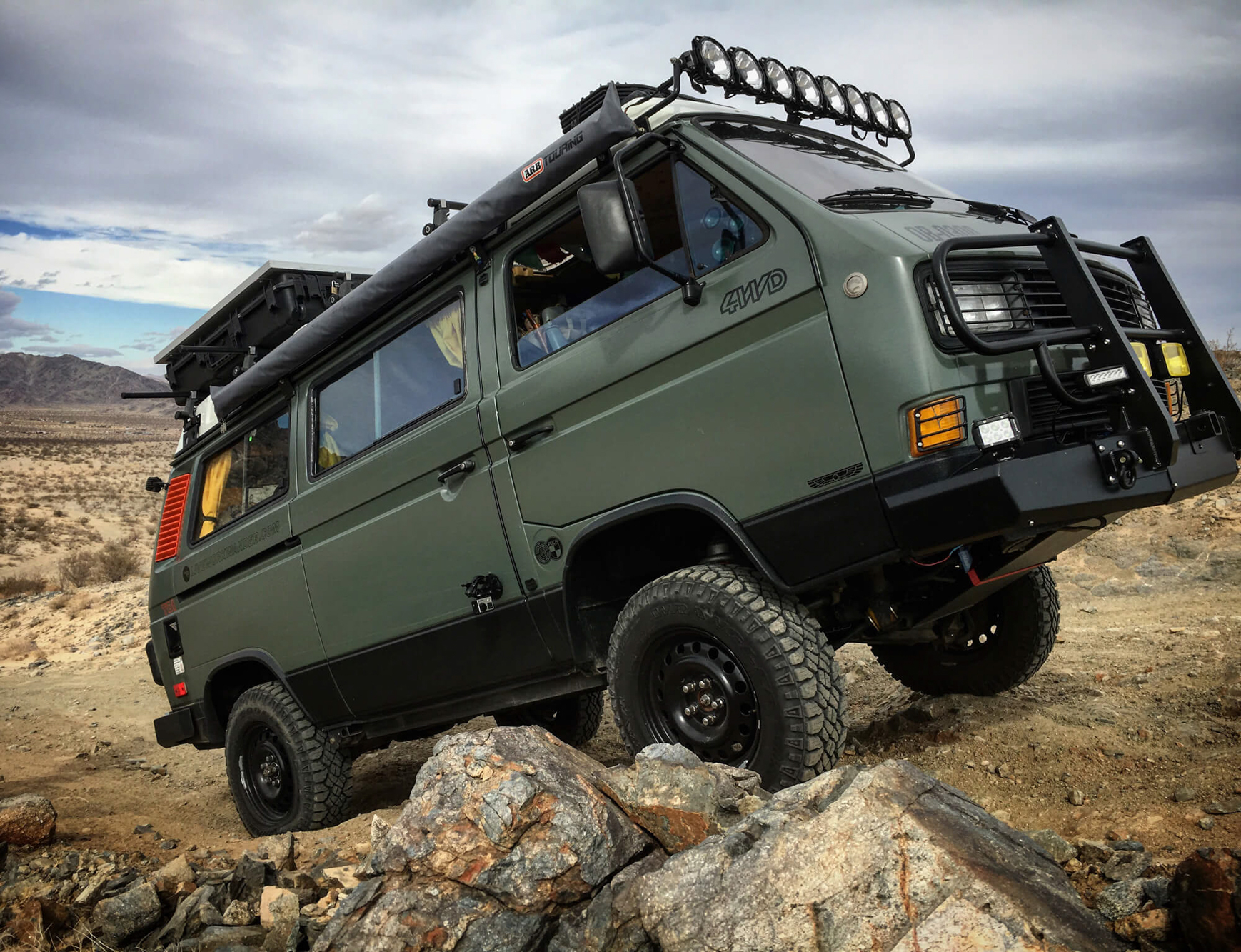
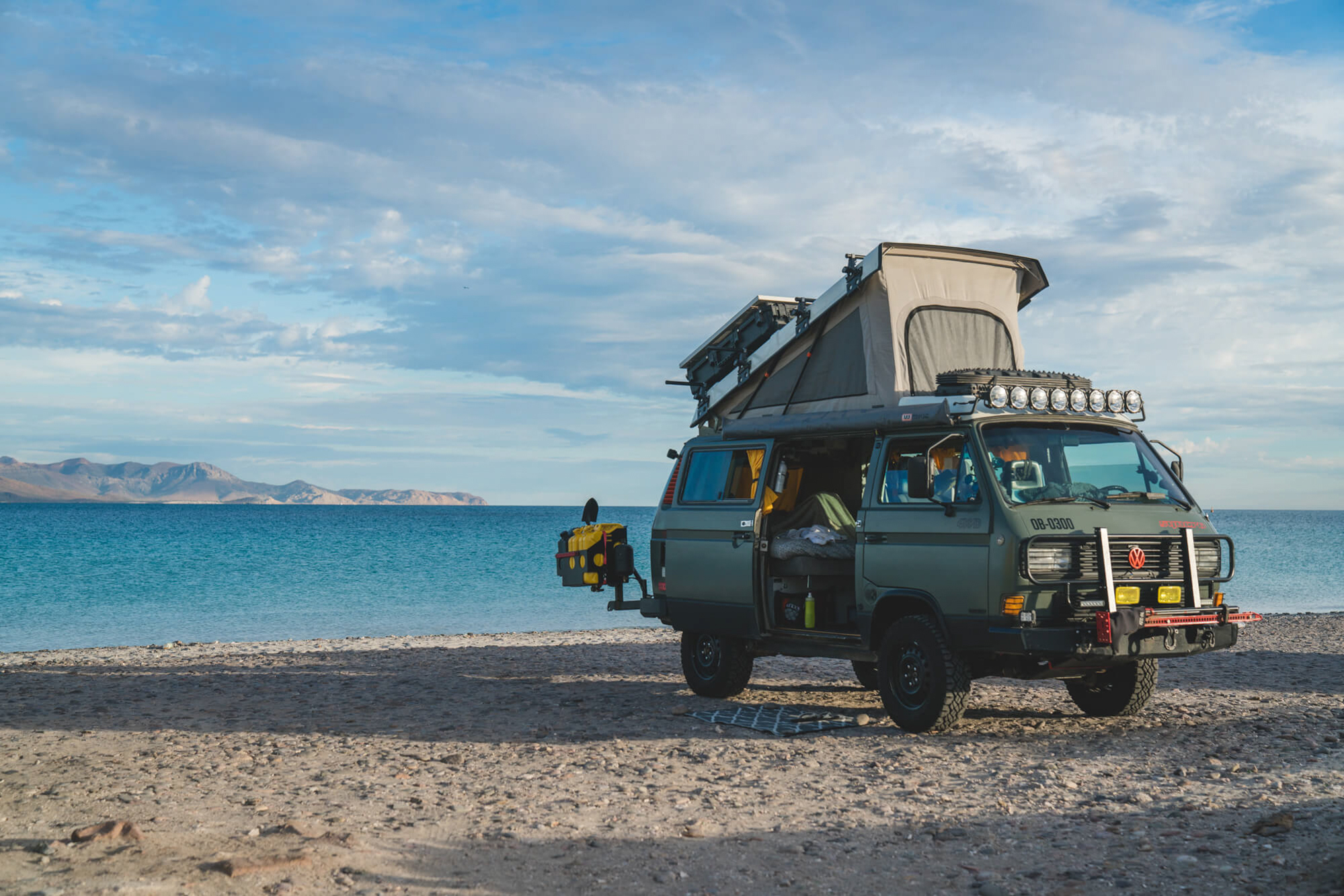
Though we hadn’t picked up a wrench in 7,000 miles and three months, we’d still get up every morning and look at each other, dreading what might break next. We’d fought the good fight, won, and we were done. Between the stress of just waiting for another breakdown and seeing that we’d blown most of our money for travel on getting that van to run right, we’d had it. We’d had it with expecting breakdowns, we’d had it with the unending cycle of content creation on social media, and we’d had it with putting miles behind us just to get closer to what felt like another vehicle-related catastrophe. At this point, overlanding was a pipe dream, a fantasy that had taken up residence between the hardcovers of a moleskin notepad where we’d scrawled our financial and travel goals. Ironically, more than a few pages of that notebook had grease stains accompanying my handwriting. In overland travel, breakdowns are expected. Living in mechanic’s shops is not. We didn’t sign up for this.
Defeated, we announced on social media that we were getting off the road. We were spent. With that announcement, we received an outpouring of support from the many friends we’d made on those platforms over the years. The socials ain’t all bad.
We checked out a house in Fort Collins, got pre-approved for a loan, and were weighing the pros and cons of being homeowners again. Then we did what all homeowners do at one time or another: we went to a car dealership and bought a brand-new 4Runner.
But we never bought that house. We went on a soul-searching, 7,500 mile road trip around the country and opted to build out our 4Runner and move to Baja for the winter.
We traveled in that 4Runner for some 12,000 miles before selling it. Although we kitted it with a Maggiolina rooftop tent, a Goose Gear cabinet system, winch, front slim line bumper and rear tire carrier, and even though that thing was a monster off-road that did things that would make our heavy Syncro poop itself, the reliable 4Runner just didn’t feel like home.

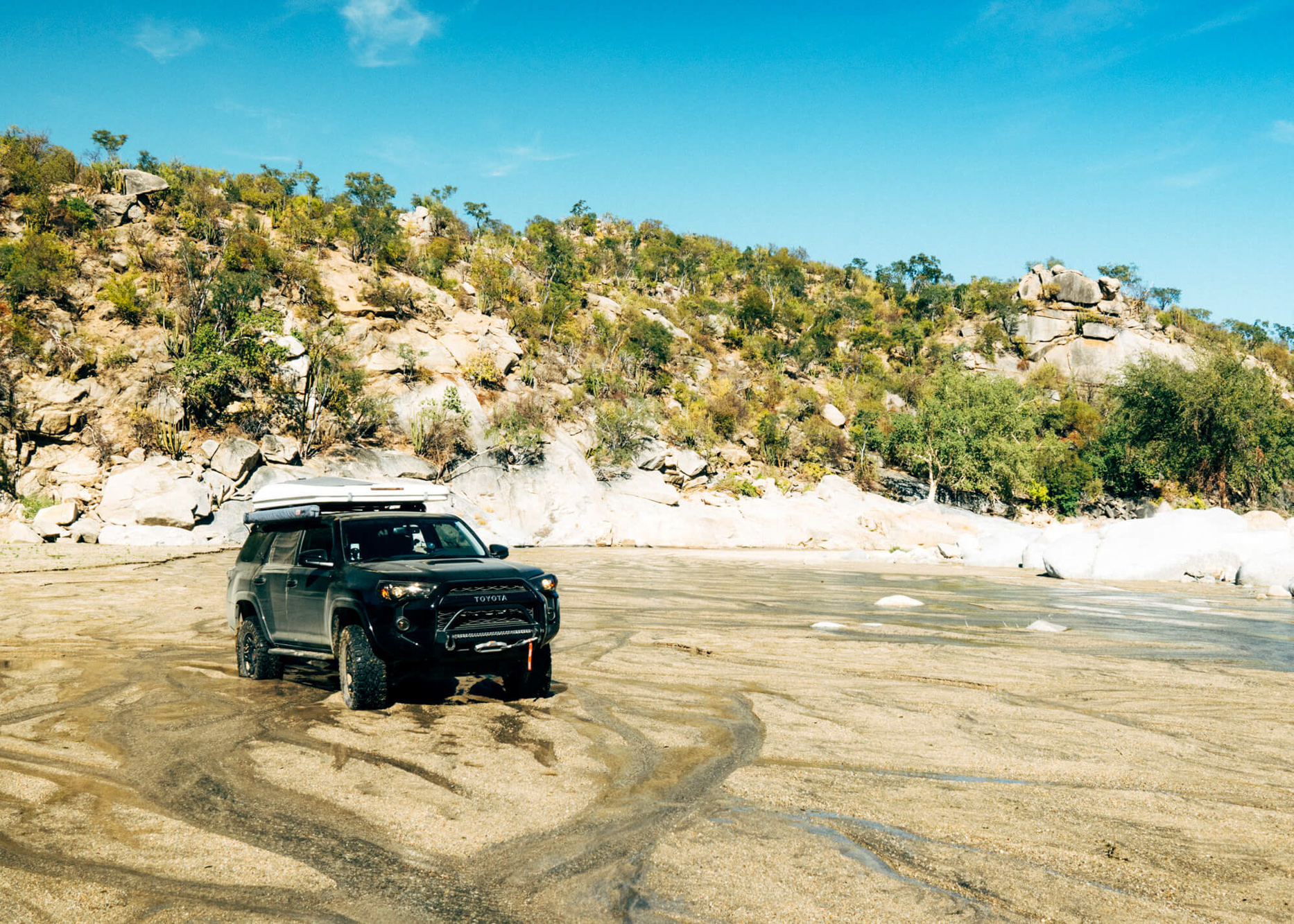
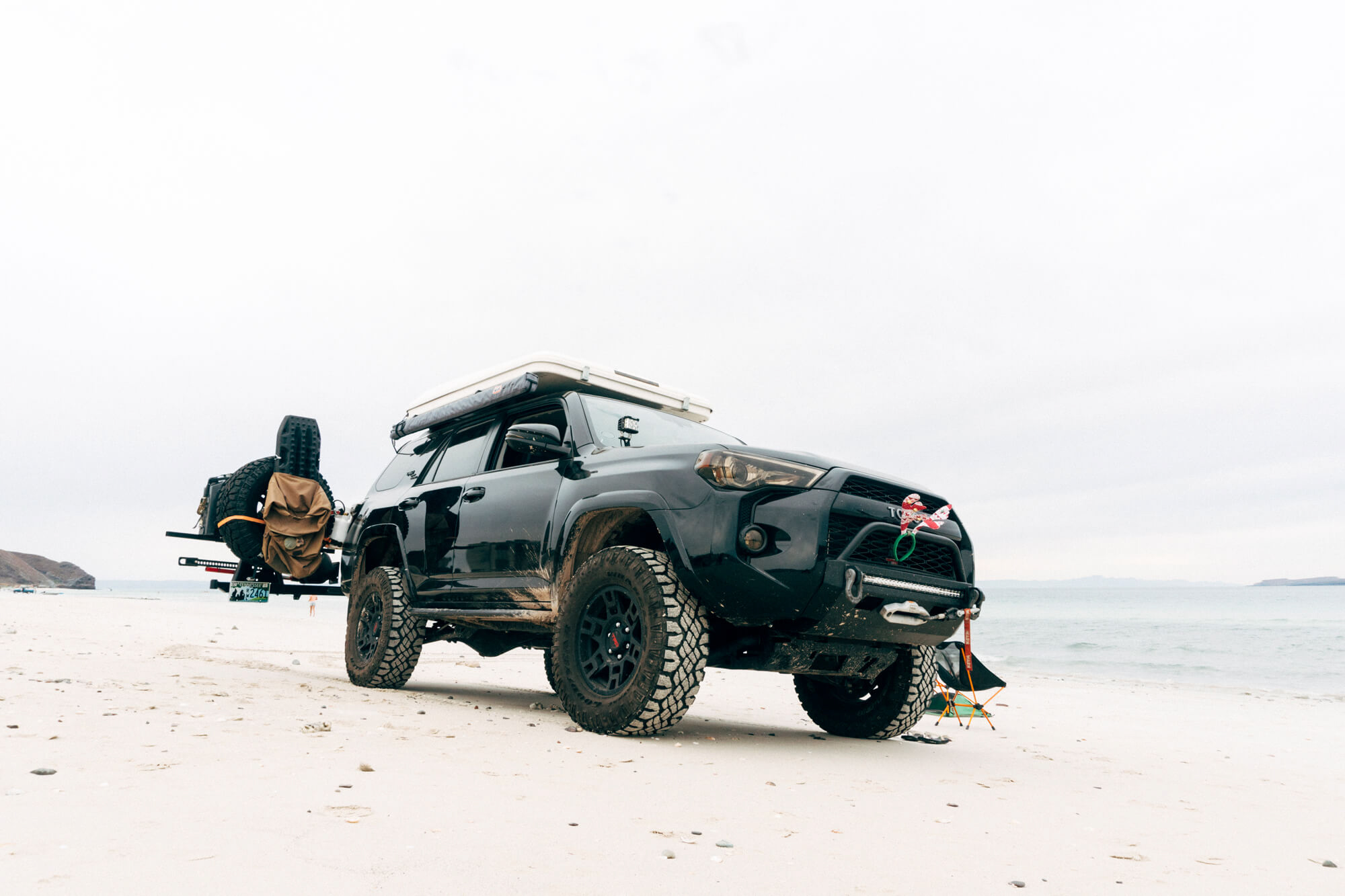
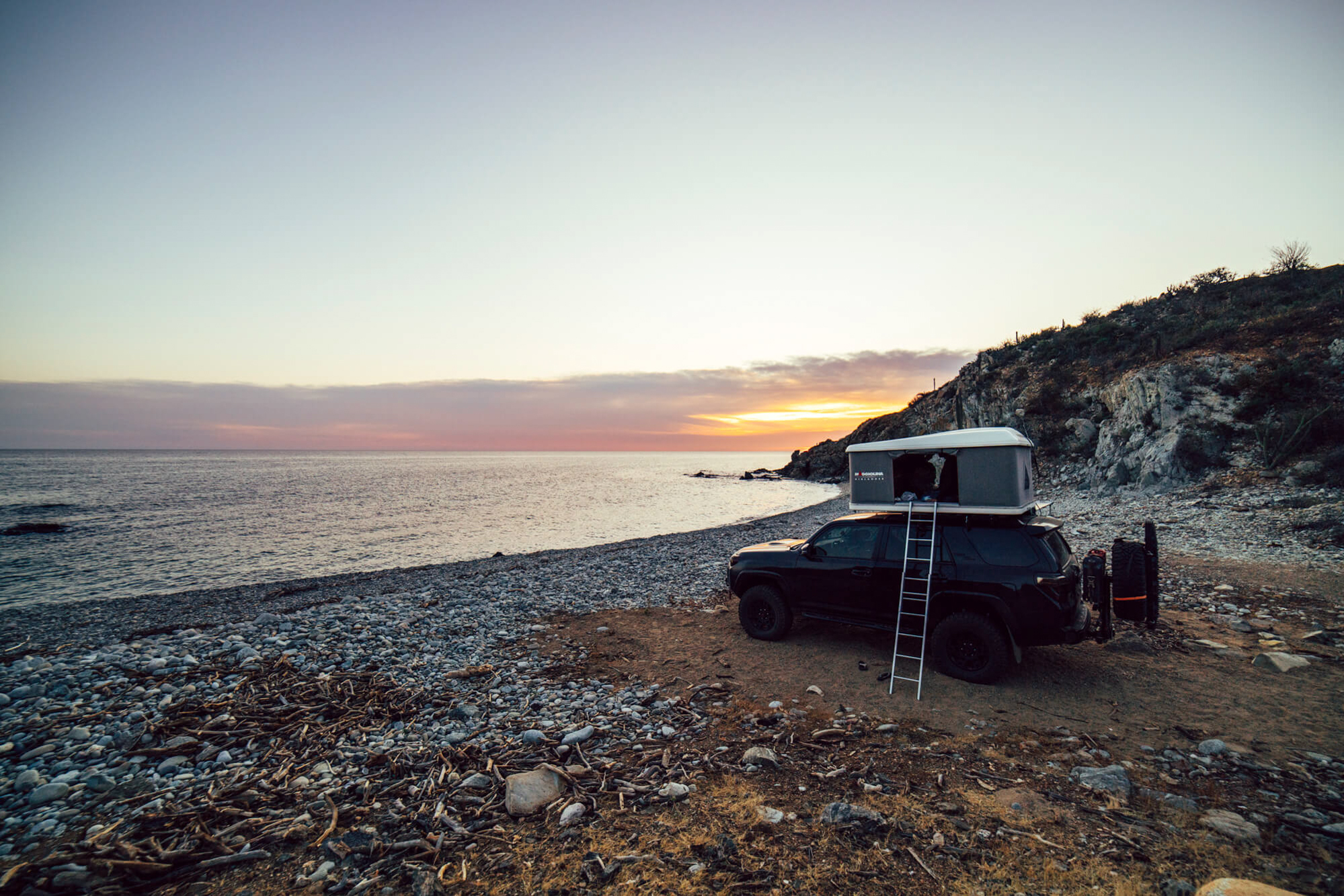


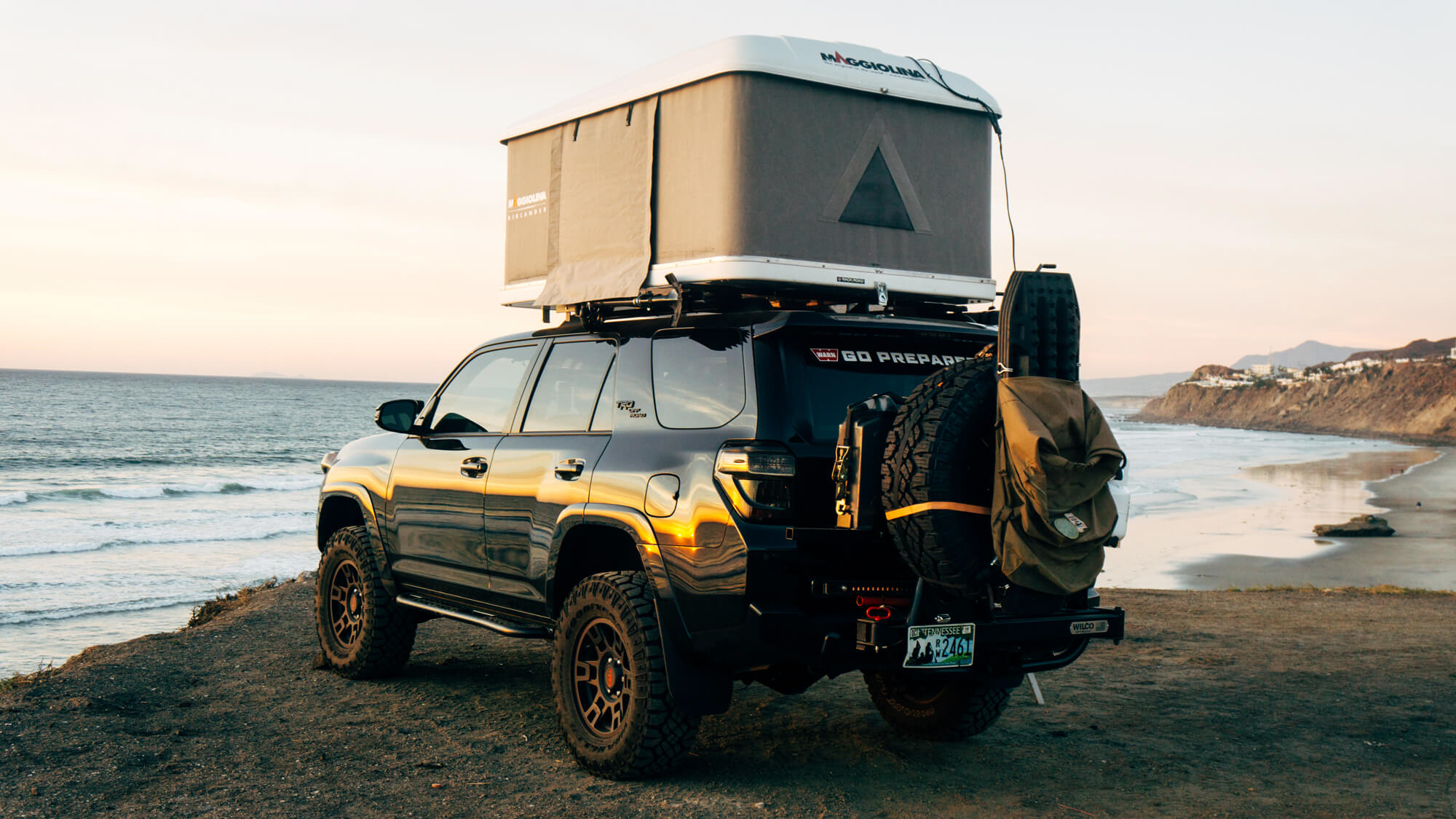
 One afternoon in Baja, while tapping around mindlessly on Instagram, a feature of our modern lives that I often wish wasn’t, I discovered a company selling short wheel base Land Cruisers with box-style campers on them. I thought, “You know, if they can put one of these boxes on a Land Cruiser smaller than our 4Runner, certainly they could do that to our truck.” I showed these trucks to the Decider and she gave me permission to contact the company.
One afternoon in Baja, while tapping around mindlessly on Instagram, a feature of our modern lives that I often wish wasn’t, I discovered a company selling short wheel base Land Cruisers with box-style campers on them. I thought, “You know, if they can put one of these boxes on a Land Cruiser smaller than our 4Runner, certainly they could do that to our truck.” I showed these trucks to the Decider and she gave me permission to contact the company.
So we called them and spoke with their US representative. He quoted us a time and rough estimate of what it would take to build out our 4Runner. “Cool,” we thought, “we could swing that in that timetable.” But then the rep said that if we didn’t want to wait, he had a fully built-out, road-ready, proven 70 Series for sale. Jessica and I both looked at each other.
The 4Runner was never “us.” Since before the Syncro, we’d wanted a Troopy after seeing Andrew St Pierre White’s build on some blog or other. But every Troopy we had access to was right-hand drive—a problem for travel in South America. Yet here was a LHD Troopy, built out, ready to go for a price we could conceivably afford if our damn Syncro would just sell. We told the rep we’d think about it.
A week later, my phone rang showing a phone number from Boulder, Colorado, and the voice on the other side was calling to inquire about test driving our VW. Five days later we were on a plane to Colorado to sell our Syncro. The morning after signing over the van, we were in a rental Ford Escape driving the snowy, western slope of the Rockies towards Salida, Colorado where we would be meeting the owner of the Troopy for a test drive.
At that time, we had been traveling around North America for nearly four years and had only ever seen one Troop Carrier. We’d never seen the inside of one, we’d never even heard what one sounded like. But we knew that the Troopy is a world-renowned vehicle designed for rugged environments, hard usage, reliable performance, and contains ample living space within its boxy body. We’d watched a few videos from Expeditions 7, noting that they’d taken newer Troop Carriers and other variations of 70 Series Land Cruisers all around the world with minimal mechanical issues. We’d watched any number of 4XOverland videos on YouTube where a green 70 Series took the show’s host on multiple adventures throughout Africa. I’d recalled from my time serving in Iraq that foreign militaries used these trucks all over that theatre of war because they were capable and reliable, and I’d noticed that it also seemed to be the truck of choice for extremists and insurgents the world over.
That day we test drove the Troop Carrier, took it off-road, experienced how it handled, how it sounded, how it rode, and we were instantly in love. It was a feeling we hadn’t experienced since the day we first drove our 2WD VW Vanagon—instant infatuation, a connection between blood and bones, rubber and steel (sounds like a romance novel). We told the owner we’d put some money down and would buy it once everything was finalized with our Syncro.
After that test drive, we flew back to Baja, loaded up our 4Runner and started heading back toward Colorado. We couldn’t wait to get all of our gear in the Troopy and set off again down the road in a vehicle we loved, finally with a real chance at doing what we’d initially set out to do when we first purchased a 4WD: overlanding.
Our 70 Series Troop Carrier boasts a number of upgrades and modifications that to us make it almost nearly the perfect rig for pursuing our dream of world travel. The drivetrain is the same as Toyota’s legendary 80 Series with a 1-HDT engine (turbo diesel) and the H151F gearbox. I’m told this combination is one of the best Toyota has ever made. Maybe. All I know is that we have put nearly 20k miles on this Troopy and we’ve only changed the oil and fuel filters.
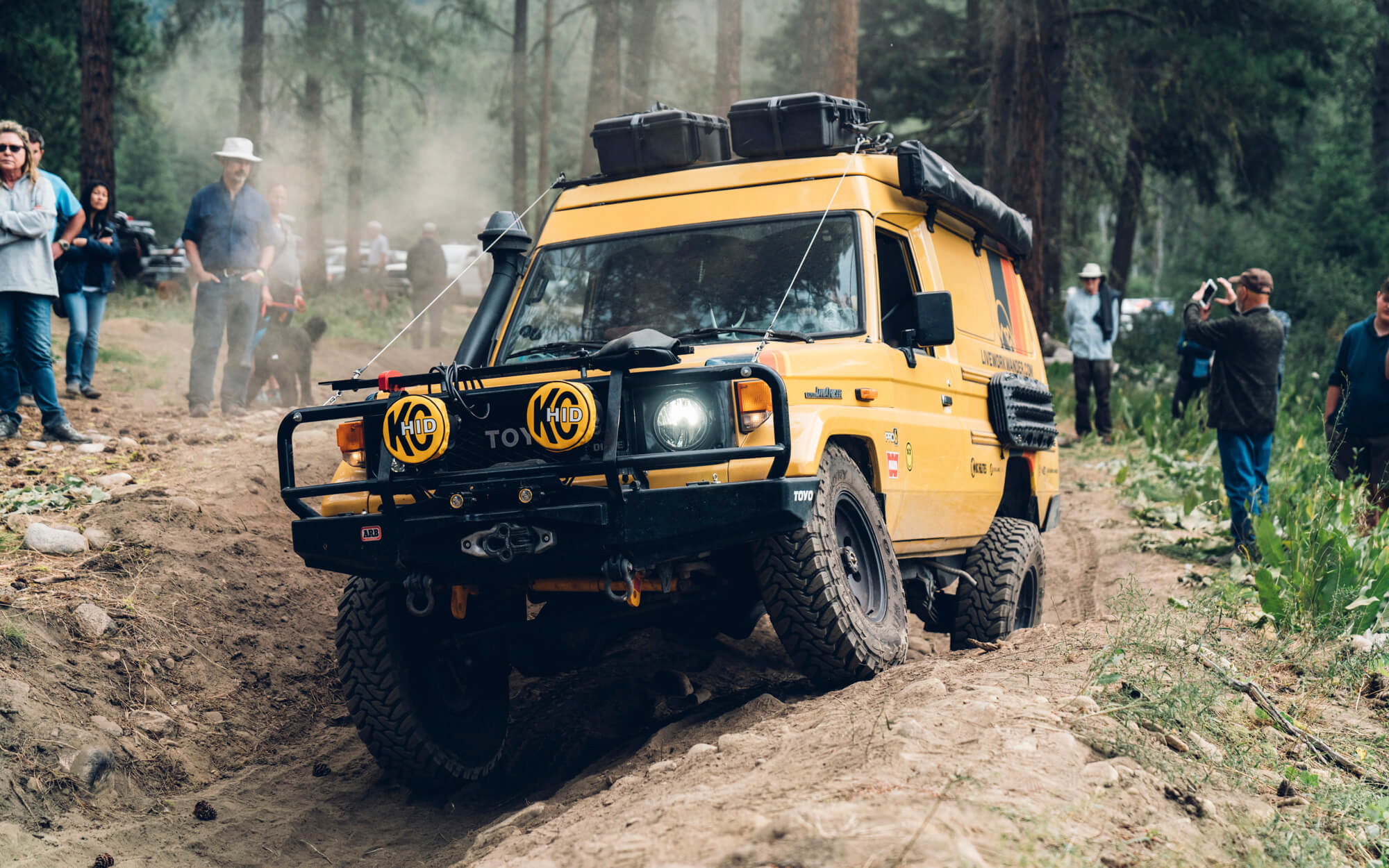

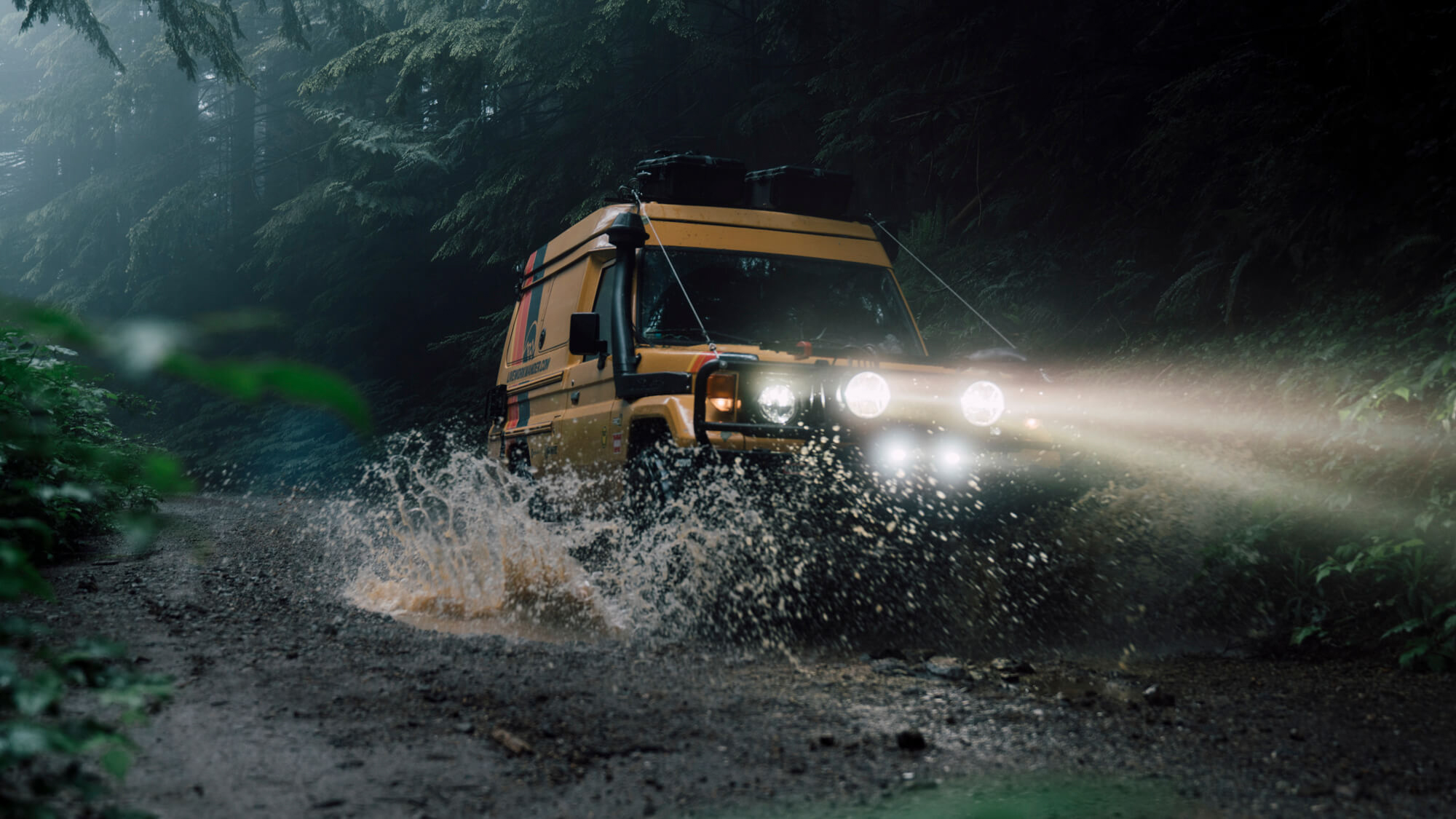
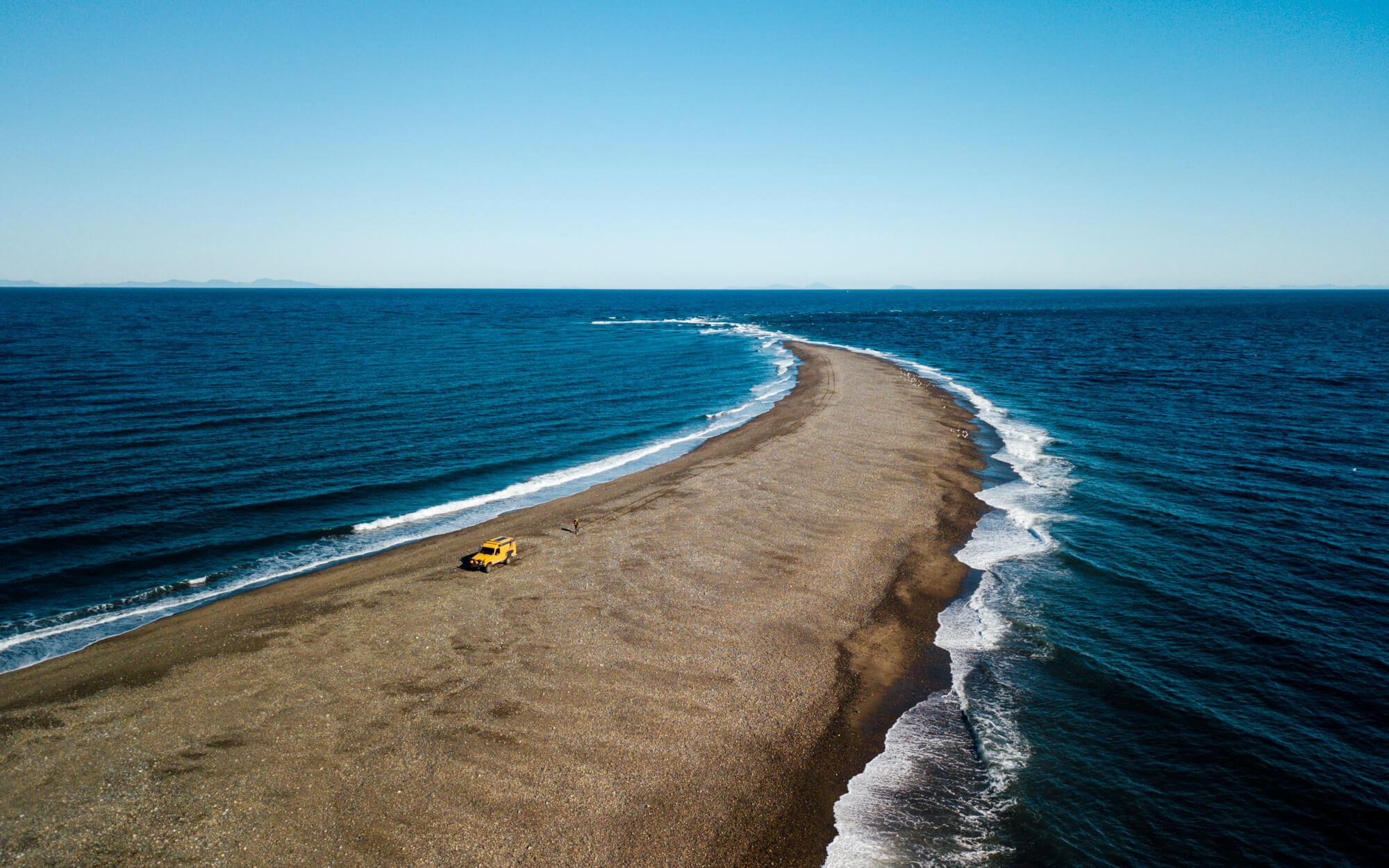
We have a 67-gallon capacity for fuel giving us an astonishing 1,200 miles of range. The Troopy has 25 gallons of useable water and an onboard water heater. It has an onboard cabin heater that runs off of our auxiliary diesel tank. In 0°F weather, we’re taking clothes off because that heater works so well. We have front and rear factory lockers, a true low range gearbox, and manual locking hubs because auto locking hubs are for people who can’t be bothered to look cool turning knobs on their wheels.
Our Troopy has a pop-top conversion made of carbon fiber. The hood is made of carbon fiber. The rear windows were removed and replaced with carbon fiber inserts. The interior cabinetry is Baltic Birch wood that eschews all the typical drawer hardware and rails you see on gear nowadays to save weight. The manufacturer even routed out large holes in the drawers themselves to cut even more weight without compromising the structural integrity of the cabinetry.
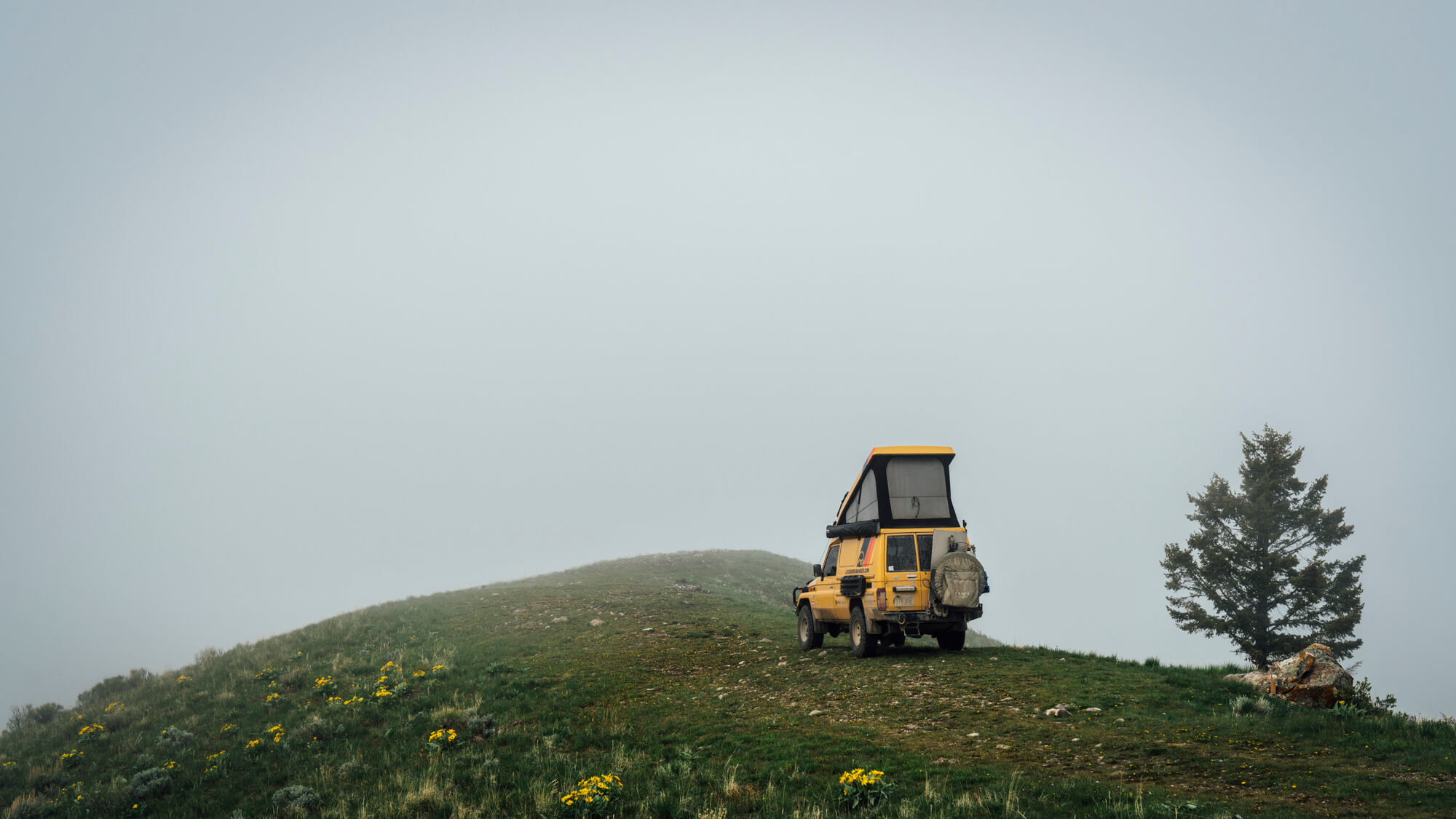
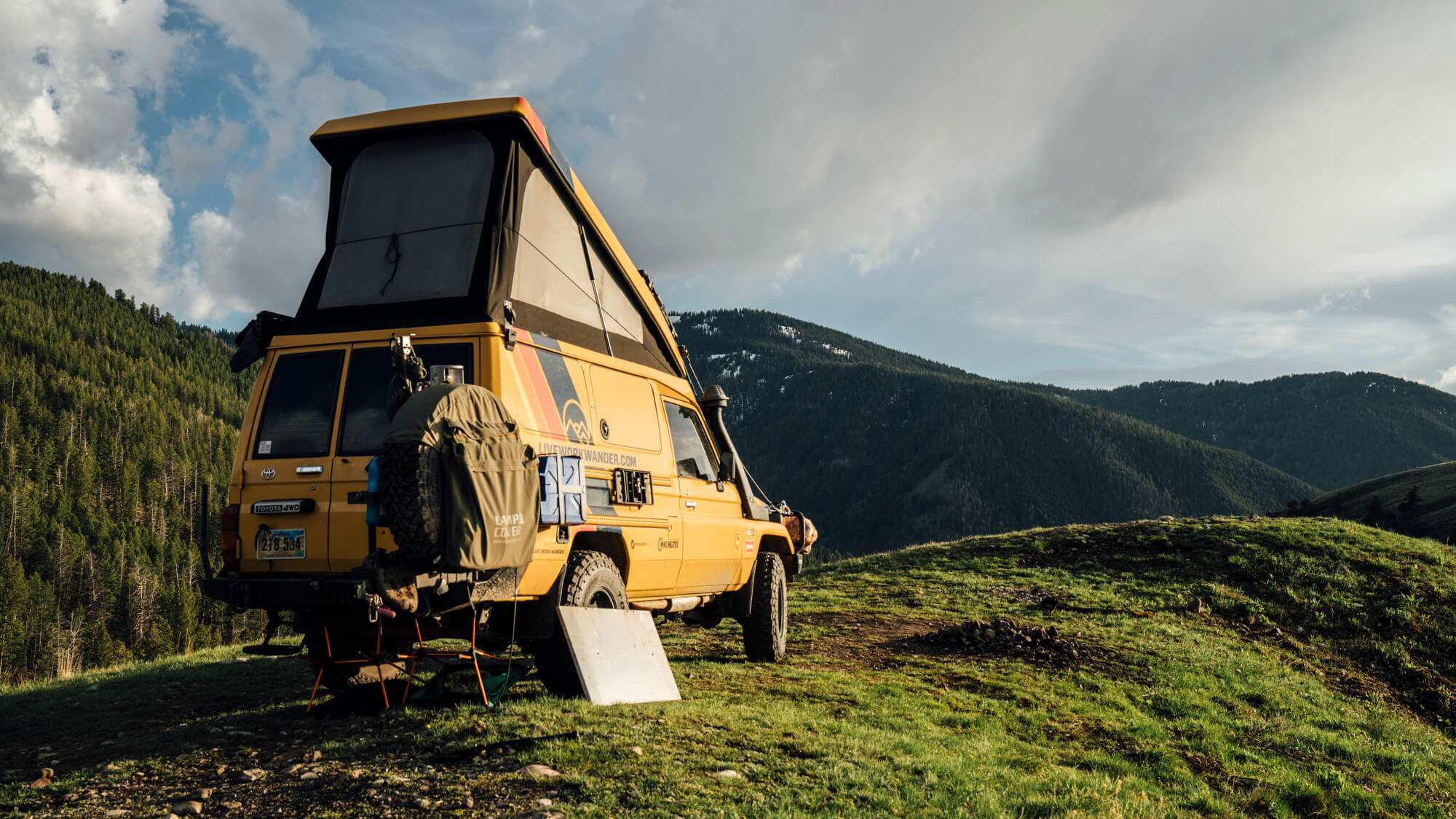
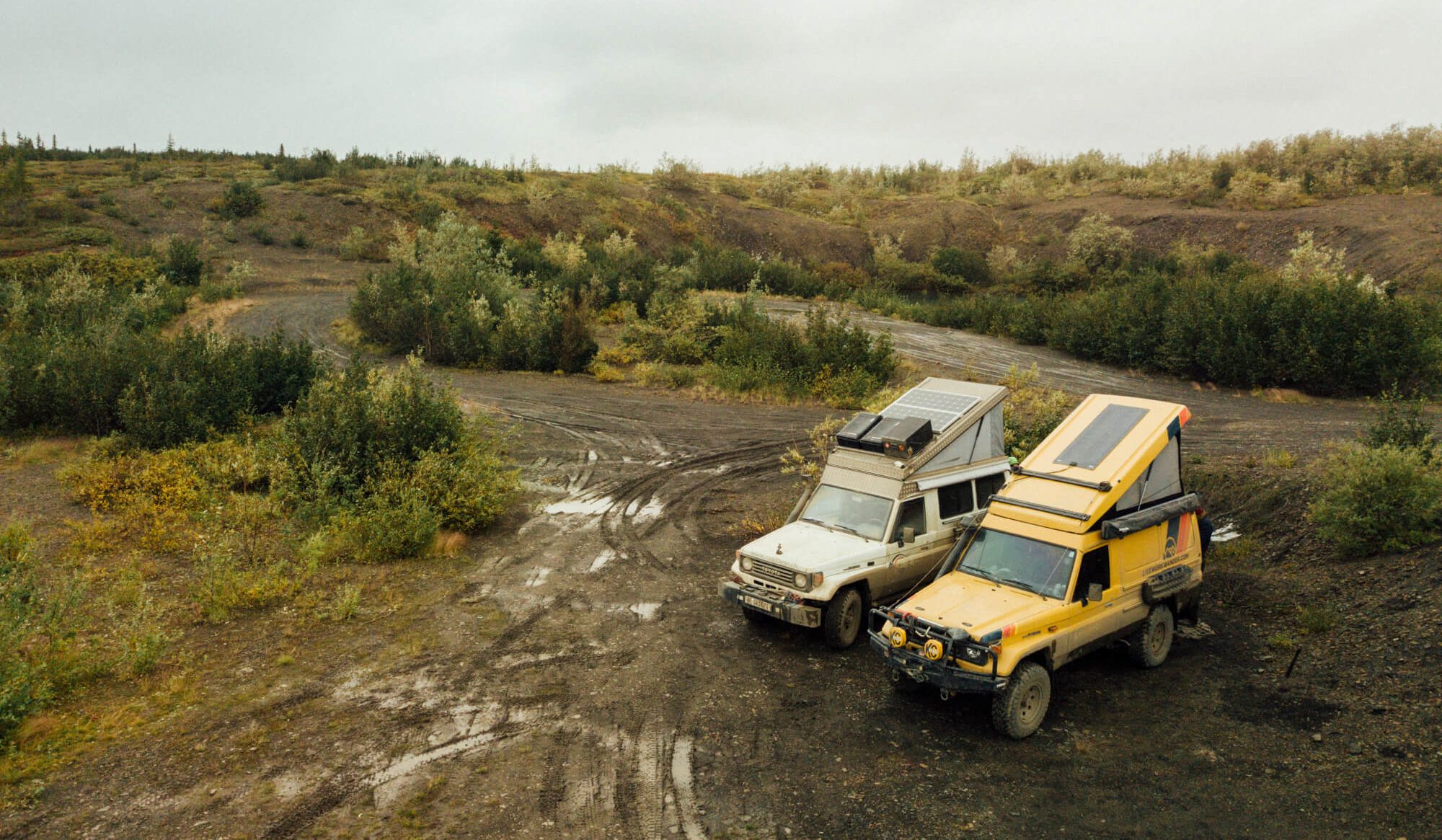
We have a two-burner stove, a sink, a refrigerator, 300AH lithium batteries that can charge off of the alternator or a 160-watt solar panel from Overland Solar or shore power. There’s enough seating inside to fit four people in the living space area for late night conversations when campfires are banned or when it’s raining.
On the front of the truck, we have an ARB bumper with a Warn Zeon 10-S winch nestled in the center. You’ll also find a set of KC HID Carbon Pods spotties, some KC Flex LED foggies, and 7-inch Gravity LED headlights from KC. On the rear bumper, we have a tire swing where we’ve mounted propane and a LifeSaver water purification jerry can along with recovery gear.

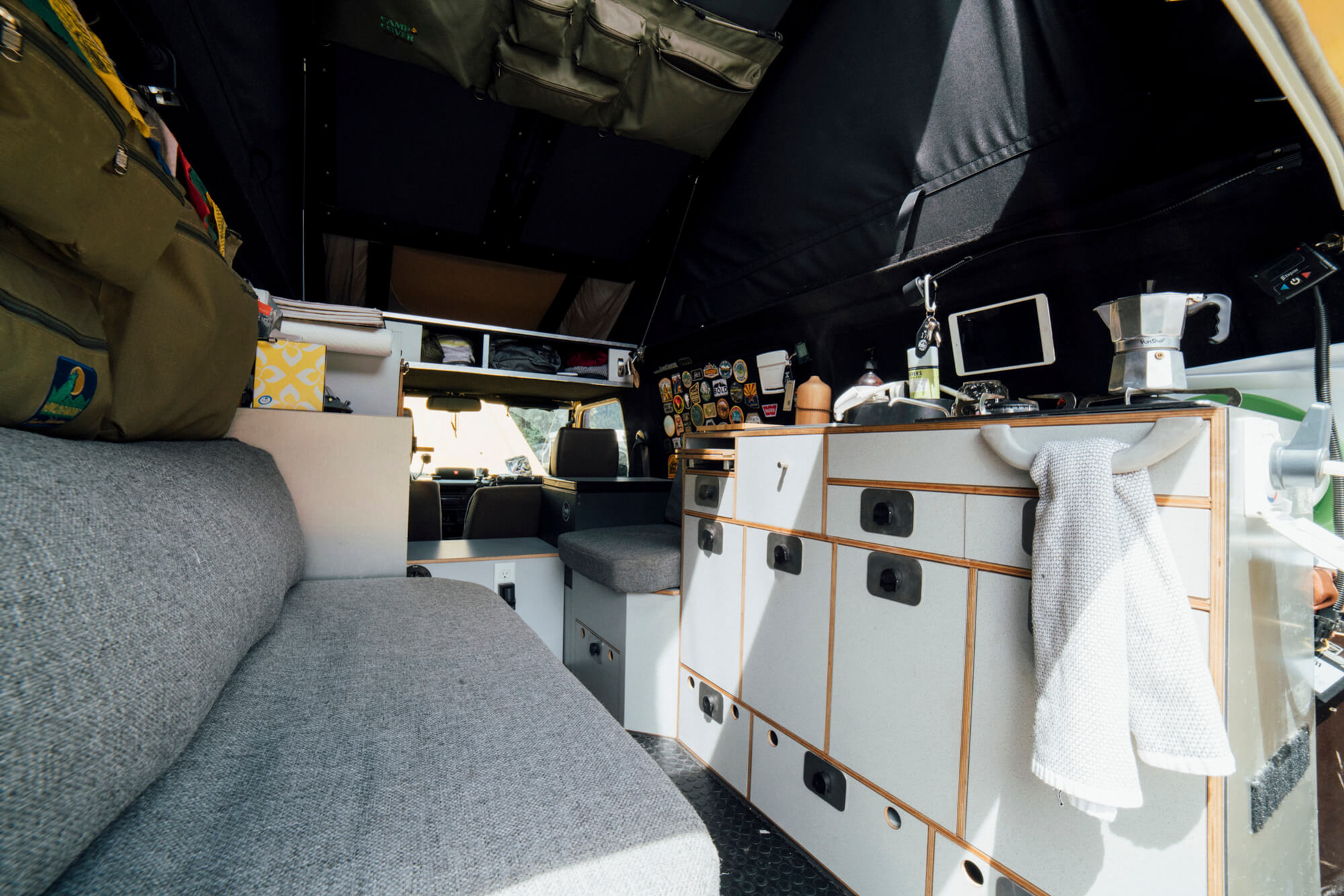
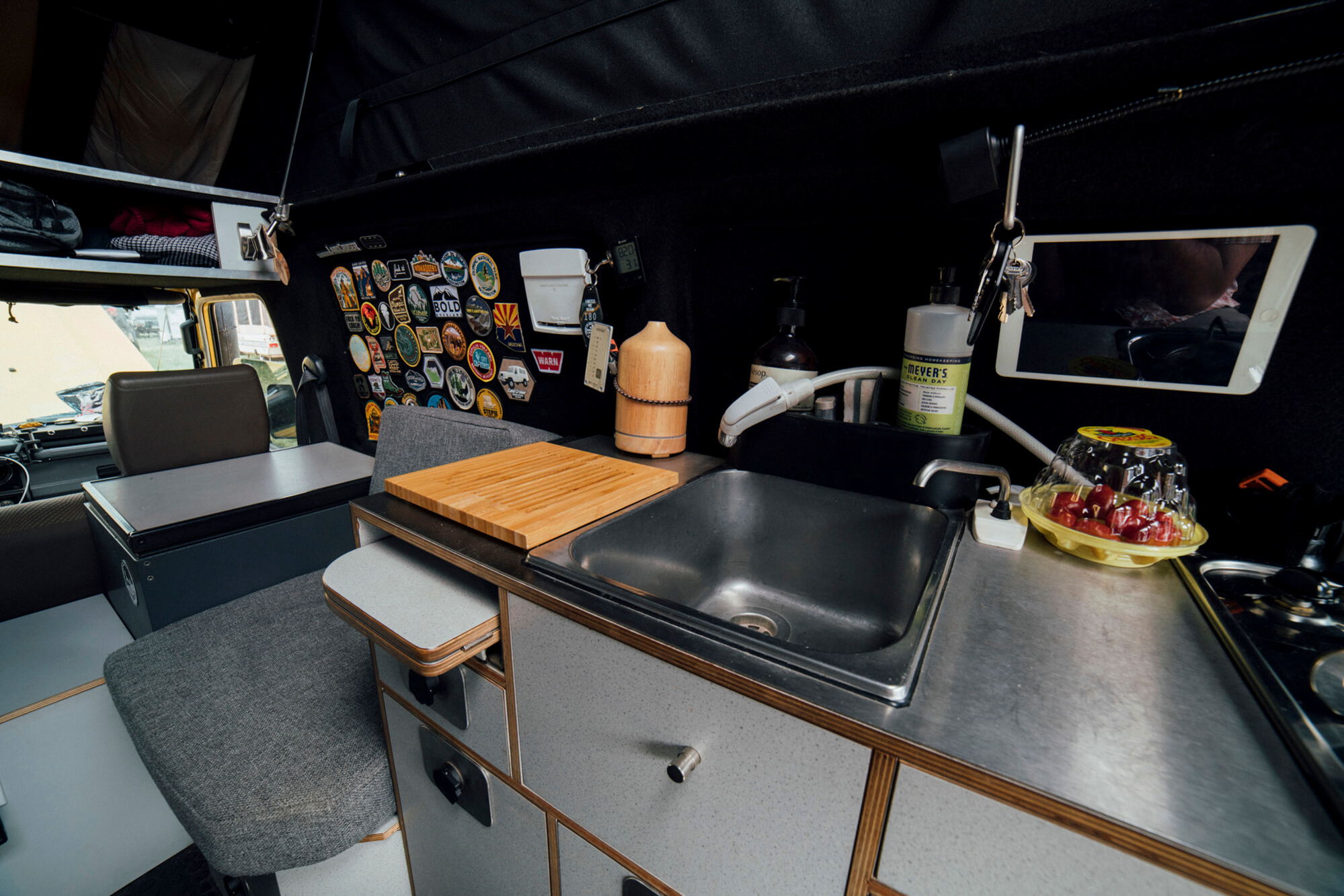
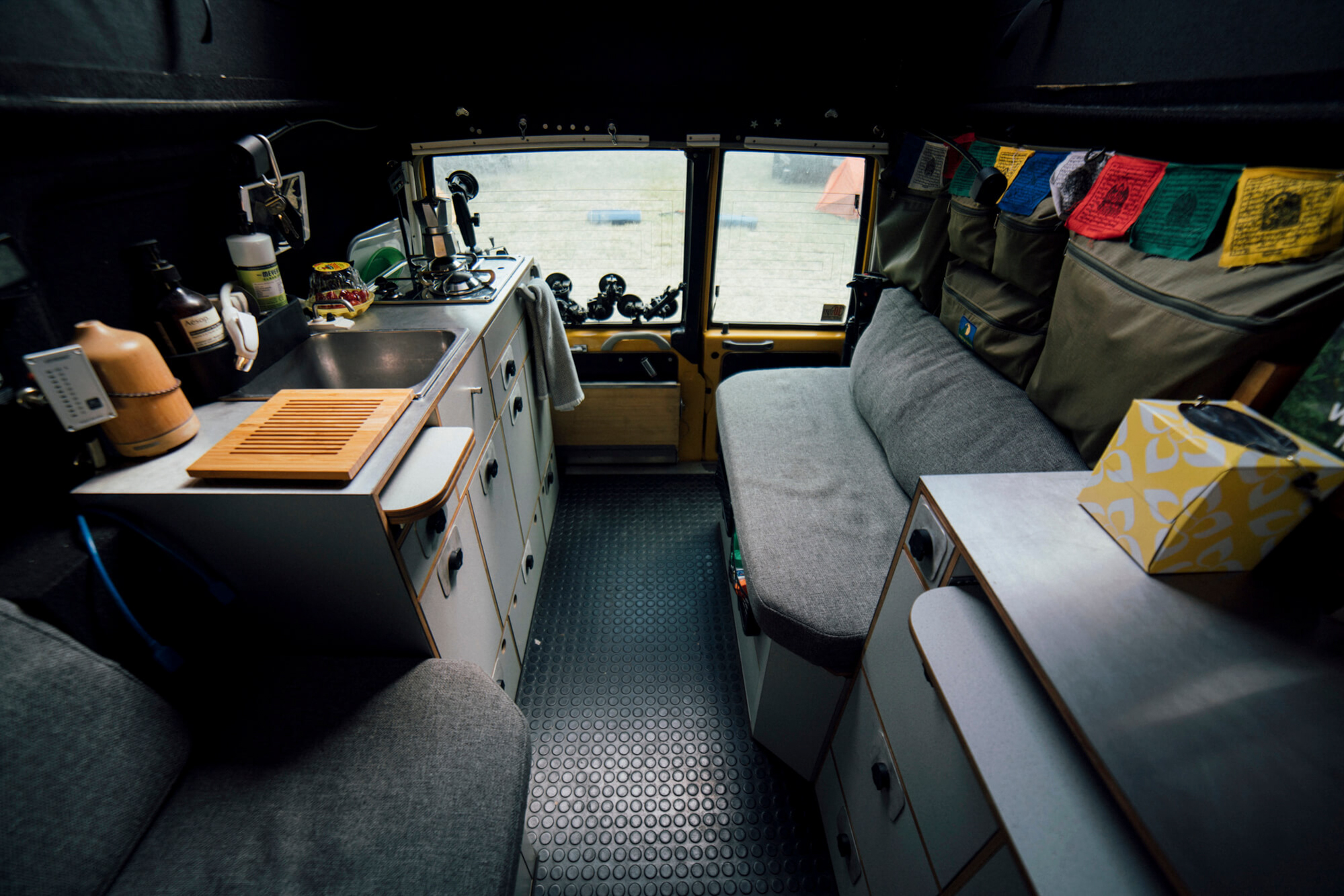
I can’t put into words how happy we are with this rig. It has done things on the trail that we would’ve never imagined a heavy rig like this could do. It has yet to leave us stranded—though I know as with all mechanical things it one day will—which has been such a refreshing change. This past summer, we drove all the way up to the Arctic Ocean and visited Tuktoyaktuk. Driving the Dempster near the end of the season was a brutal, teeth rattling affair that I’m almost certain would’ve shaken our Syncro to death. Though uncomfortable, the Toyota chewed through those miles of mud, snow, potholes, and slick goo with ease. And then it took us further into Alaska, up a gnarly ATV track to an ancient glacier field, and then back onto a thousand miles of tarmac without skipping a beat.
Coming from the Syncro, our Syncro specifically, to this Land Cruiser has made us wonder why we didn’t make the change sooner. Truth be told, the answer is probably that were it not for our travails in that van, we may have never bought our 4Runner. And without recognizing that the 4Runner wasn’t the right platform for us, we never would’ve contacted that company that ended up in us buying this Troop Carrier. What is that saying about best-laid plans?
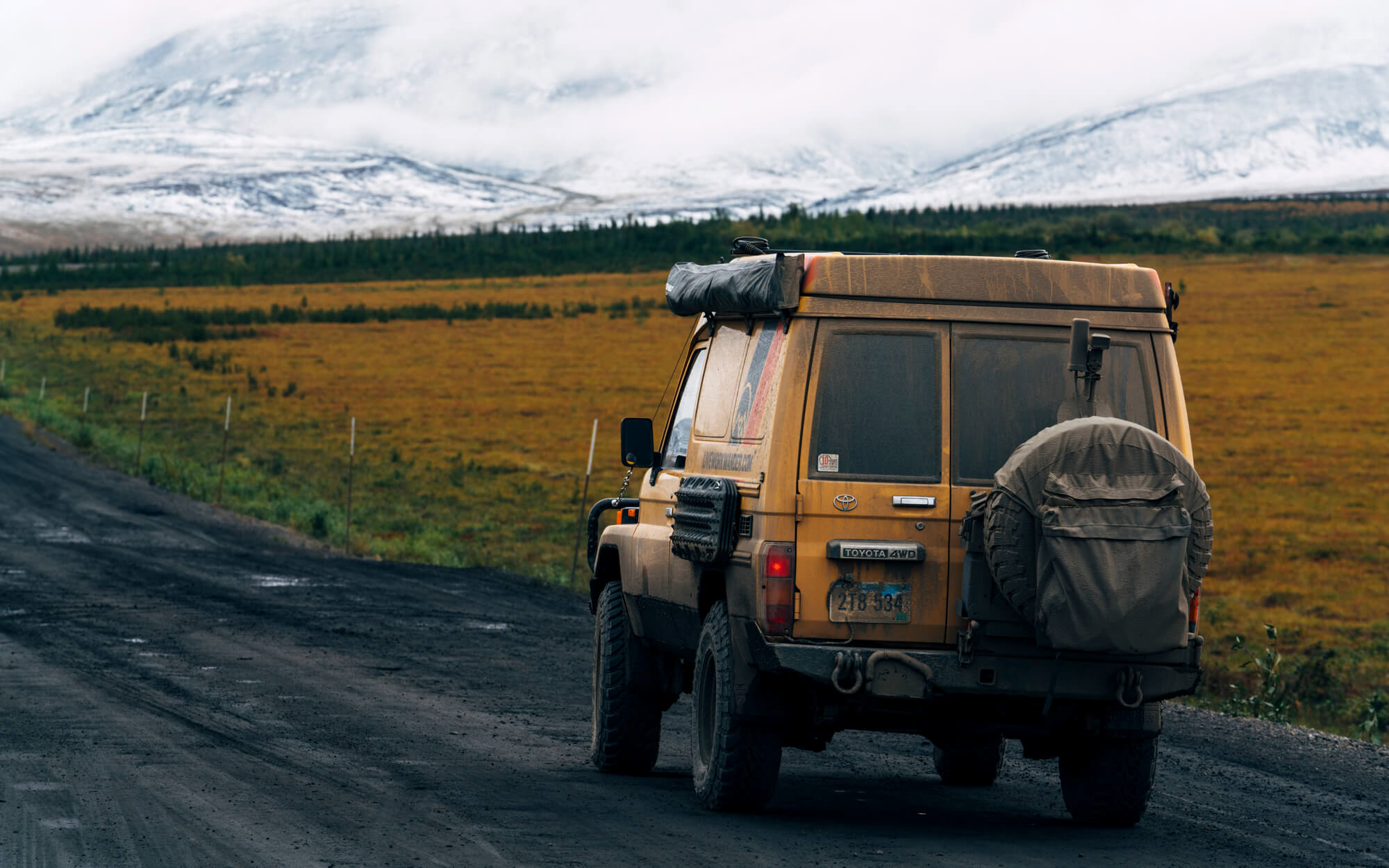
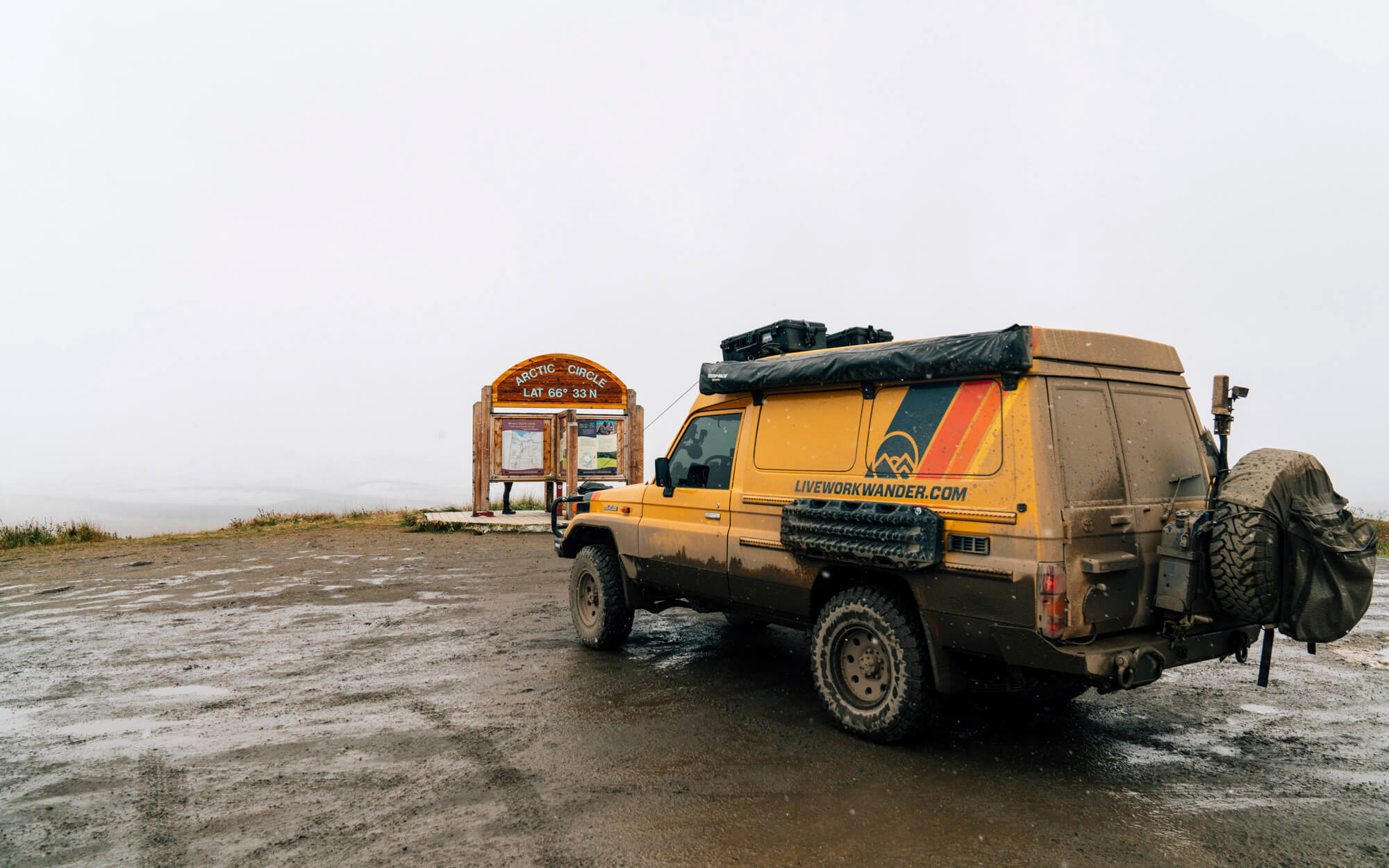

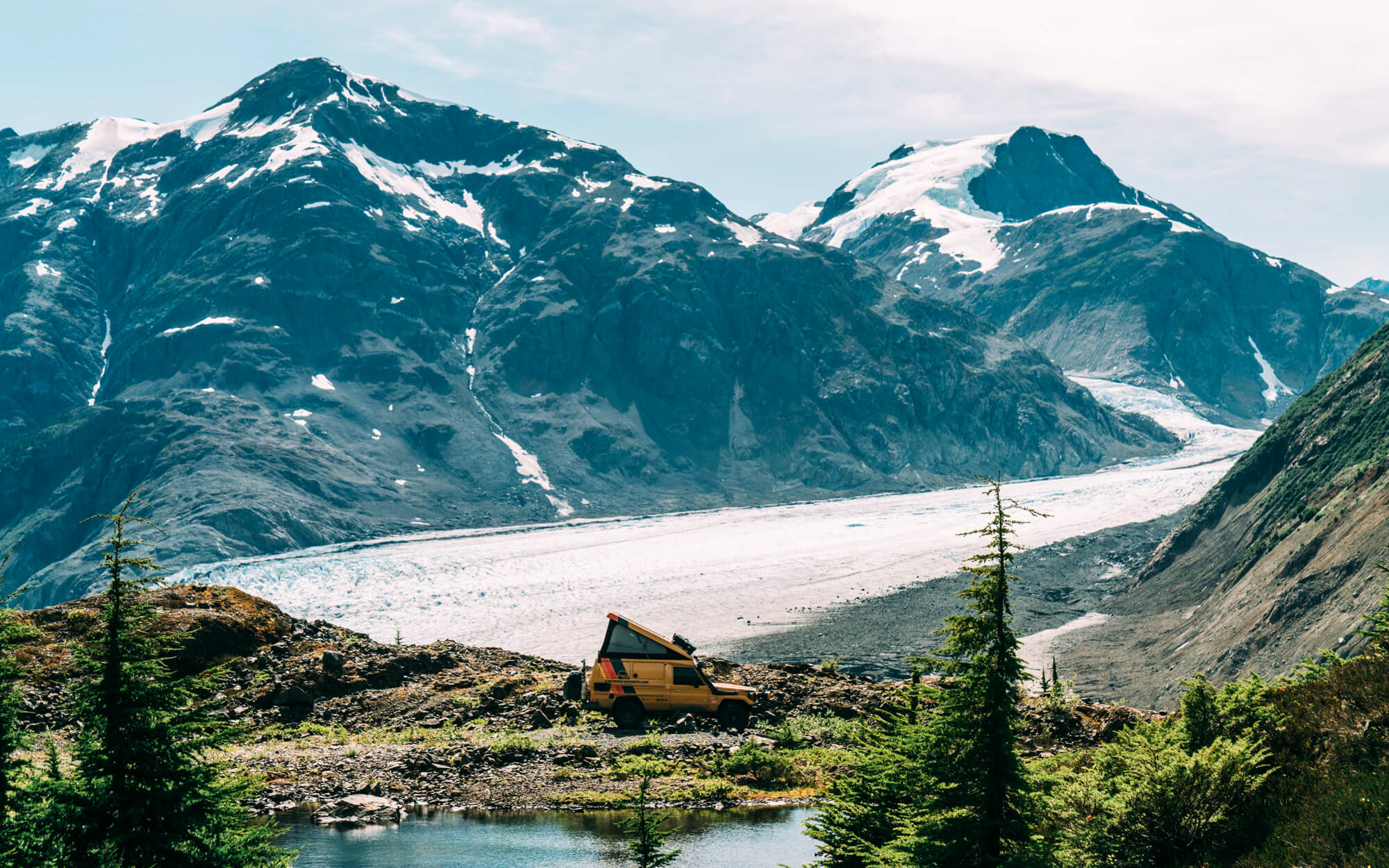
Now in our dream rig, sunsets burn brighter, coastlines stretch further, towering evergreens brush bluer skies, and long, empty roads beckon us to find the hidden experiences and stories that lie beyond the arbitrary boundaries governments draw. It may not matter what you drive out here in the spaces between familiar civilization and the social mores that we’re expected to live by, but whatever it is, it should be able to get you far away from all the noise.



16 Comments
Joshua
November 5th, 2018 at 1:08 pmGreat read. Who made the conversion pop top? You mentioned “I discovered a company selling short wheel base Land Cruisers with box-style campers on them” but didn’t list the company name? Can you share it here please?
Troy Smith
November 5th, 2018 at 6:27 pmGreat story! Sad to hear of your woes with the Syncro. My story begins (at least the four-wheel interest) with a 2wd vanagon also. I’ve yet to have anything else that felt like it matched my personality as well, and was as much fun to drive, but the vanagon was always going to be a bit of a love-hate relationship. I wanted a Syncro but couldn’t afford one (i’m surprised you found one for less than $20k, of course maybe in retrospect it’s more clear why?) and wound up with an enormous lifted 4×4 Ford E350 that never felt right and I couldn’t afford to roadtrip in at 8 mpg. Several rigs later now, but haven’t got the right one yet.
Anyway, I won’t bore everyone with the rest of my story, but just had to share that i too have a soft spot for those old vanagons, and even though i’d take a sprinter over one any day, the sprinters will just never be as cool.
I gather you have the Excursion now, do you still have the Troopy as well?
Hope to see you at Expo East if you’re attending.
Jorge Gonzalez
November 7th, 2018 at 11:57 amHey there! I’m the writer of the article. It was initially misattributed. We live, work, and wander in our Land Cruiser still. Thanks for reading!!
George Lane
November 6th, 2018 at 1:56 pmHi Chris.
Great story. I see that you spent some time in Ft. Collins. I am a Ram. Are you?
Take care.
George
Jorge Gonzalez
November 7th, 2018 at 11:58 amHey there! I’m the writer of the article above. It was initially misattributed. We’ve spent a lot of time Ft Collins. We love it there!
Carter
November 8th, 2018 at 9:49 pmJorge,
Cool read. Which company did the cabinetry ?
Also the amazing image of the Troopy on the sand spit…Where is that ?
Cheers
Carter
Jorge Gonzalez
November 15th, 2018 at 1:26 pmThe sand spit is Rose Spit on Haida Gwaii in British Columbia.
Jelmer van der Meer
November 11th, 2018 at 8:21 amGreat read, I’m jealous. It’s funny to see though that, despite all of the builds, a 4Runner is almost never the answer for a lot of the people out there. I owned one and between the (horrible) gas mileage and the lack of space when trying to run around with a family, there are much better options out there. I’ll give em one thing, Toyota did nail the design of the refresh, they look great.
Samuel Clarke
November 18th, 2018 at 2:19 amFantastic read. Glad the troopy has worked out for you guys! They’re an awesome vehicle and overland platform. Reliability is an underappreciated attribute in touring vehicles…so often the romance of cult status older classic models such as the Volkswagen Vanagon Syncro or Land Rover Defender drowns out the voice of reason. Been there, done that and now enjoy Toyota reliability also.
Vlad
November 19th, 2018 at 12:21 pmGreat article Jorge. Wife and I have been following your antics on YouTube. Great to see a fellow Landcruiser owner. Give ih8mud.com a peek. Its a great forum with like minded Cruiser folks. In the mean time Safe Travels!
Christy
November 21st, 2018 at 8:08 pmWow, this story resonates. We had a 1985 2wd vanagon for 5 years. We were lucky that it never broke down on us while traveling. It was a constant money suck and we didn’t always get to where we wanted to go. It was both easy and hard to sell it and it still has a piece of my heart. But, it just wasn’t working for us. Next up? We have a Vagabond Drifter (wedge style camper topper) on a 2nd Gen Toyota Tacoma. May even be similar in space to what you have. We are weekend warriors so aren’t planning to build it out, but are looking forward to the reliability, greater ground clearance and perhaps most of all, peace of mind to our new compact approach to getting out.
THOMAS GAI
November 22nd, 2018 at 1:44 pmHowdy Jorge. It’s perfect. I have some questions that I would prefer to ask privately. Awesome ride. Look forward to chatting.
John Runberg
November 26th, 2018 at 5:58 pmI’m real glad that you found a rig that worked for what you were doing. As a long-time Vanagon person I’m not all that surprised with some of the troubles – too many shops I’ve seen are excited about recommending build-ups that sounds awesome but are utterly impractical. And, to end up with a 6,500 vehicle weight on a rig that was originally designed to handle *just* a mere 5,512 pounds GVWR… broken CVs and exploded transmissions aren’t too uncommon.
So, FWIW, the Vanagon is amazing in so many ways. But, for a full “overland” build with all the fancy bits it just wasn’t designed for it. A Troopy, Jeep, etc. is far more effective (although not nearly as sexy)!
Addison
December 1st, 2018 at 3:14 pmAwesome read! Love the comment about “best laid plans” -it’s funny how we (humans) plan so hard and still the most rewarding circumstances or situations often reveal themselves outside of those plans. Life.
I think I recognize a couple of the areas in your shots… East Kootenay’s in BC?
Tex68w
December 10th, 2018 at 11:53 amLove the article. It’s nice to finally hear the journey of how and why y’all made the changes you did. As an owner of a 5th Gen 4Runner (our third) I can understand the feelings of not being connected with it. They are fantastic vehicles that are extremely capable and reliable, but they lack soul and get lost in the endless cookie cutter builds that all end up looking the same. We keep buying them convincing ourselves that we don’t need or don’t want to afford a 70-series or 200-series Land Cruiser, but these lies can only go on for so long.
I am a very enthusiastic follower of your channel and I look forward to the future episodes catching up to this new chapter with the Troopy and hopefully there are some with the 4Runner thrown in as well.
Best wishes on your future travels and keep up the amazing work with LiveWorkWander!
Tony
January 14th, 2019 at 4:08 pmGreat article, been following these guys on YouTube from the start, what a journey and so much more to come.